
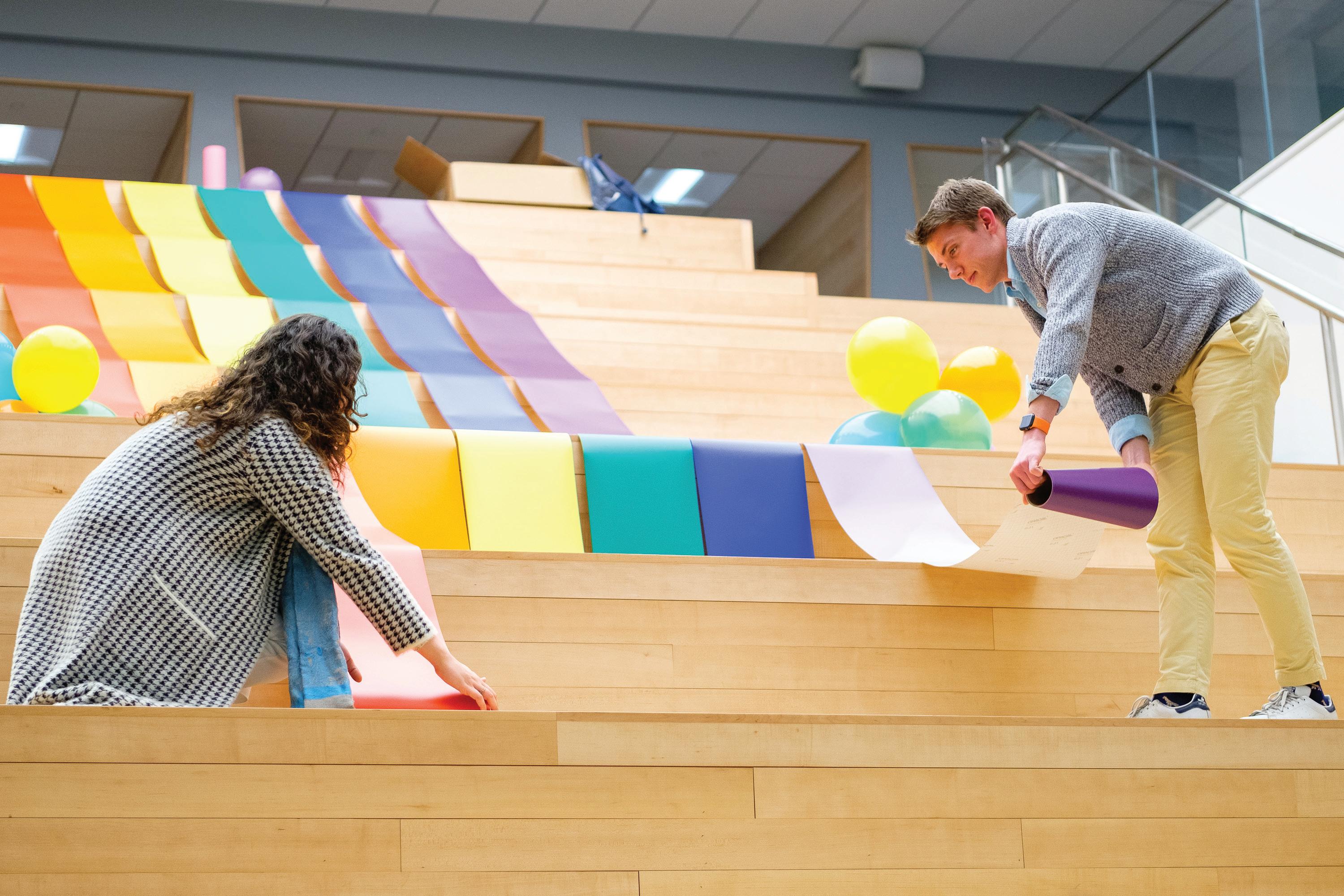
Student Government Association to transition Gianforte boycott to an LGBQTIA+ take-back
BY EVAN PAPAGEORGE, HEAD COPY EDITOR
As many students know, the Gateway North building, officially Gianforte Family Hall (GFH), is named for Montana Governor Greg Gianforte. When the announcement was made in 2017 that Gianforte would be funding the construction of the new building, part of the Gateway Academic Complex, students from the former Diversity and Inclusion Committee created a boycott, discouraging any student activities from taking place in the building.
The boycott was in protest of Governor Gianforte’s political policies, which the Torch Alliance says include criminalizing homosexuality, pro-life campaigns, and other policies that “work directly to harm fellow Americans.”
After much consideration and thought from the Student Government Association (SGA) and its Diversity, Equity, Inclusion, Belonging, and Accessibility (DEIBA) committee, they have announced that the boycott will be revamped and become a “take-back” of the space.
The Stute spoke with DEIBA chairperson Dani Qira and
Hoboken floods again!
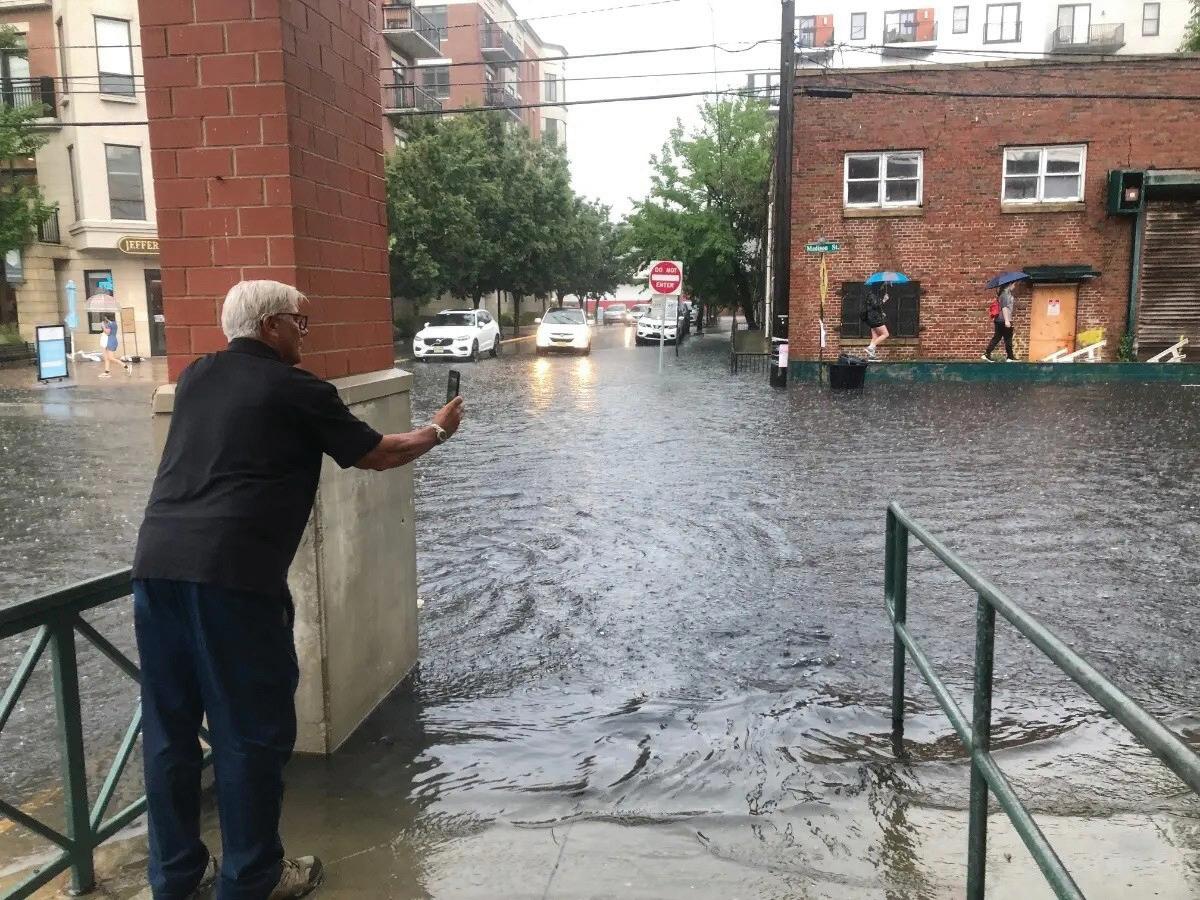 BY SEAN ANDERSON, STAFF WRITER
BY SEAN ANDERSON, STAFF WRITER
Hoboken, like its surrounding areas, has a history of flood issues. This was on full display the weekend of March 23 to 24 when a Nor’easter blew into the area. Consistent rain fell all through Saturday into Sunday.
Around noon on that Saturday, the City of Hoboken released an emergency advisory through its alert system advising residents to avoid low-lying areas as “intense rainfall of greater than 0.8 inch per hour” would result in these low-lying areas becoming flooded. In total, about four inches of rain fell, resulting in certain locations being flooded into the night.
Neon Trees headlining Techfest and student openers announced
BY MADISON HELLER, STAFF WRITER
Techfest, the campus student music festival put on by the Entertainment Committee (EC), is an annual tradition at Stevens that has existed for over ten years. It is an incredibly popular event on campus featuring free food, giveaways, student performers, and a headliner act.; This year’s director, Mollie Good, describes it as “a student music festival, where an artist is brought on campus, free of charge to Stevens students.” The Stute spoke with Good to learn more about this year’s offerings and what students can look forward to.
“Fall 2023 semester, [when] a survey was distributed out to the whole student body, where people voted for their top artists that were provided on the survey. Neon Trees was one of the most voted-for bands! From there, I started the process to see if they could come to campus.”
SGA President Nick Smith to learn more.
After a few years of construction, GFH opened in December 2019 along with South Hall as part of the Gateway Academic Complex. The new center boasted stateof-the-art research facilities, lecture halls, classrooms, a café, and a large staircase for students to relax during the day and host events during the night. During construction, Governor Gianforte donated a monetary gift to Stevens to fund the erection of the new building. As a Stevens alum and an influential politician, the school accepted the donation. At the same time, Gianforte was running to be the Montana Representative in the United States Congress, and his campaign included pro-life and anti-homosexuality rhetoric. In response, members of the Stevens student population, including the Torch Alliance and the SGA, moved to start a boycott of the space and made an official statement against Gianforte and his policies.
BY KAYDEN CANNILLA, OPINION EDITOR
This boycott was started in 2017, and today, seven years later, it continues
This year, in perfect harmony with the glow theme, the headliner for Techfest is the rock group Neon Trees. Many current undergraduates will know their hits well, as the group was first established in 2005, and some of the band’s bestknown songs reached the height of their popularity in the early 2010s. Everybody knows the words to 2011’s “Everybody Talks,” which is part of the reason they were chosen as the headliner. Their single “Animal” went double platinum after its release in 2010, and they have repeatedly charted on the Billboard Hot 100. According to Good, EC began their selection process in the
Neon Trees is an incredibly popular campus act. They played at Dartmouth College last year and are scheduled to perform at Binghamton University in a few weeks. Contracting such a well-known band was no easy feat. Good shared that since her first communication with their agent in October, she has worked with the Office of Student Life to run background checks, send offers, and negotiate contracts. The contract was ultimately signed in February. Regarding the process, Good said, “It was a lot of work but worth all of it, and I am super excited that they are coming to campus!”
Adding to the excitement of Techfest is the opportunity for student-run bands to compete for the coveted opening slots. Six bands duked it out at the highly anticipated Battle of the Bands, run by the EC, Stevens Underground Music Awareness Committee (SUMAC), the Audio Engineering Club (AEC), Castle
Some residents took to posting videos to YouTube in the aftermath of the several hours of rain. These videos depict streets that had turned into rivers, with cars driving through several inches of water in some areas and curbsides that had become small ponds, making them impassable by pedestrians. During occurrences like this, the City of Hoboken takes extra precautions, including offering discounted rates in parking garages so that cars are not stuck in these flooded areas and deploying no-parking signs in low-lying, floodprone areas.
On March 19, 2024, the departments of Residential and Dining Services (RDS), Student Culture and Belonging, and Student Support brought guest speakers from I Love Female Orgasms to campus. This 90-minute event garnered significant social media attention in the preceding weeks, and 250-300 students attended the University Center Complex (UCC) Tech Flex for the event.
The event was advertised on the @stevensstudents Instagram with a post that included the innuendo “Are
you coming?” It is the post with the most interactions of the semester, with 123 comments and 511 likes at the time of reporting; The post with the next most comments has less than 20. There was plenty of discussion speculating about the contents of the program and debating how this program impacted Stevens’s reputation.
The speakers started off the event with their intention for the evening, saying, “We support you making decisions about sex that are safe and healthy for you.” They noted how much of the informal education our generation received is from
internet pornography. The I Love Female Orgasms website encourages people to attend events to learn how to have their first orgasm or how to have better orgasms. They emphasized the importance of events like this because “talk about pleasure is talk about consent,” and sex education that centers on pleasure contributes significantly to sexual assault prevention. “Consent is the floor, not the ceiling: it is where sex begins,” they told the packed room.
Broad topics include anatomy, solo stimulation, partner stimulation, sexual health myths, and “the orgasm gap.” The orgasm gap
is the social phenomenon concerning how “across every demographic studied, women report the lowest frequency of reaching orgasm during sexual encounters with men.” Women often require 20 minutes of direct stimulation to achieve an orgasm, compared to men’s two to five minutes. Penetration alone is not the most effective way for women to orgasm, with most preferring to use manual or vibrator stimulation. 70% of people with vaginas do not orgasm from penetration alone because the clitoris, which houses the most sen-
Undergraduates wow at state-wide research conference
BY EVAN PAPAGEORGE,
The plan that Hoboken employs during these heavy storms has been established for a while now, as it is often expected that persistent rain will bring at least slightly dangerous flood conditions. But why is this? The answer lies in the topography of Hoboken and the type of land that it is on. A paper that applied a “weather–hydrologic–coastal–stormwater framework” to the city’s ge-
Attending a research institution is the opportunity to participate in revolutionary research that can make a difference in the world. However, the involvement of undergraduate students in conducting their own research is less prominent than many would like. Part of a state-wide initiative to increase undergraduate research, the Independent Colleges and Universities of New Jersey (ICUNJ) recently hosted and invited Stevens students to their
annual Undergraduate Research Symposium (URS).
ICUNJ, which took place on March 19, 2024, in the historic Bell Labs Complex—now Bell Works—in Holmdel, NJ, invited students from across the state’s many private higher education centers, including Stevens, Seton Hall University, Saint Elizabeth University, and Princeton. Although smaller than other schools in ICUNJ, Stevens sent seven students to present their research at the URS.
The research presented by Stevens students spanned a range of disciplines. Two students major-

ing in biology and chemical biology presented a project about using artificial intelligence to synthesize new molecules, and another showed how a new model can help study kidney cancer. One science, technology, and society student examined ethics and morality in the medical field. Other projects centered on developing cheaper renewable energy, exploring atomic clocks, and cultural history and how to evaluate the future.
ICUNJ’s URS came at a time when Stevens advocated for increasing undergraduate research, an initiative led by the Office of Undergraduate Academics (OUA) and the Student Government Association (SGA). This coincided with the hiring of the new Director of Undergraduate Research and Ph.D. Program Application and the SGA’s work in starting an organization to foster undergraduate research. URS is an annual conference hosted by ICUNJ. OUA offers resources to help undergraduate students apply for scholarships, conferences, and other research opportunities. While the


Tech Flex packed for I Love Female Orgasms HOBOKEN, NJ | APRIL 5, 2024 VOLUME CXXI No. 23 NEW STUTE EVERY FRIDAY • EST. 1904 The student newspaper of Stevens Institute of Technology, and creator of Attila the Duck. www.thestute.com TikTok @thestute Instagram @thestute facebook.com/stevensthestute Remember... April showers bring May flowers NEWS (2-3) Gianforte boycott changing to an LGBQTIA+ take-back The SGA is developing this multi-year protest to a new form to celebrate pride. FEATURE (4) Mental Health Awareness Learn about mental health in STEM, how music can reduce stress, and de-stress actvities. SCIENCE (6) Duke shuts down plant collection? Sofa-sized turtle lived alongside humans? Read about what’s going on in the world of science. PULSE (10) Read answers from the Stevens community to our weekly Roving Reporter, plus solve our weekly crossword puzzle and sudoku. We write Stevens history
HEAD
2
NEON
2
NJU
2
COPY EDITOR SEE DEIBA PAGE
SEE
PAGE
SEE ORGASM PAGE 2 SEE FLOOD PAGE 2 SEE
PAGE
PHOTO COURTESY OF PATCH.COM (SHOT BY CAREN LISSNER)
RAFAEL LEE LI FOR THE STUTE
KHOSLA ‘25
PULSE EDITOR........................................MIA PETROLINO ‘25
HEAD PHOTOGRAPHER RAFAEL LEE LI ‘25
ARCHIVES LIAISON.......................KEVIN CASTNER JR. ‘24
ASSIS.
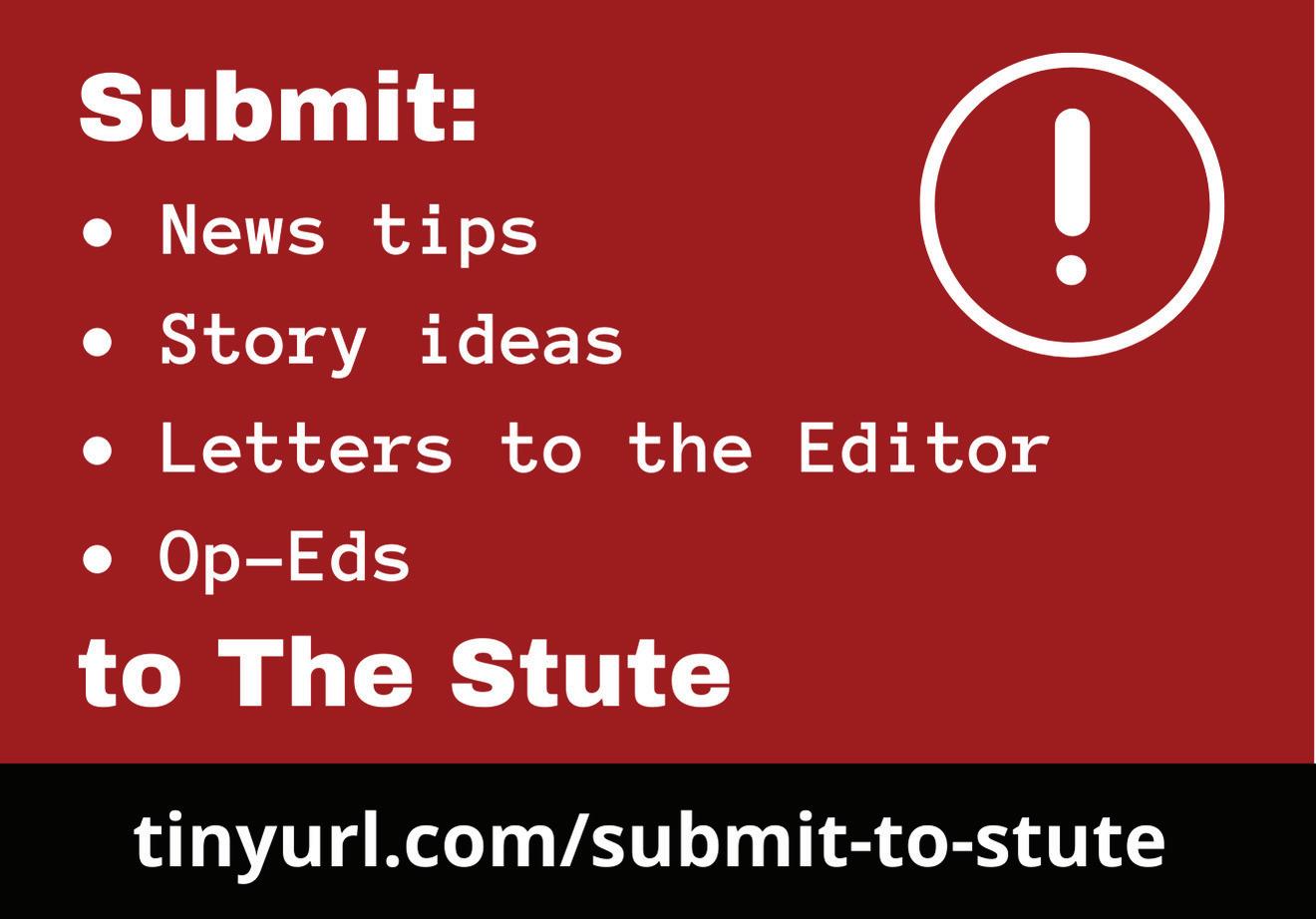
DEIBA
CONTINUED FROM PAGE 1
with little to no traction. New generations of students are often not aware of this protest and it has been made clear that the building will not be renamed. While it has been an intentional choice, Stevens students miss out on the opportunity to use the multitude of spaces tailored to their needs in the building. Because of the limited impact the boycott was achieving and the loss of space for students, the SGA is transitioning the boycott into a “take-back” of the space. According to Smith, the boycott is not ending — it is
NEON
CONTINUED FROM PAGE 1
Point Radio (WCPR), and Stevens Women in Music (SWIM) and the top three bands vied for votes from attendees. This year’s three winning bands, in no particular order, are Future Nostalgia, a Folk/Indie band that started in February of this year and consisting of Liam
FLOOD
CONTINUED FROM PAGE 1
ography and urban configuration found that “Hoboken’s low-lying topography (the southwestern part of Hoboken is less than 1 meters above sea-level) and 94% impervious coverage makes it vulnerable to flooding from storm surges and rainfall.” Additionally, Hoboken has a combined sewer overflow (CSO) system, an older system for drainage, which has added to the flooding issues. One of the biggest flooding issues in recent years for Hoboken happened in the wake of Hurricane Sandy. The major problem with Sandy was the storm surge, which measured 2.5 meters. According to the article, the result was “the storm surge draining into the in lets and surcharging the drainage
ORGASM
CONTINUED FROM PAGE 1
sitive nerve endings, is not direct ly involved. Another aspect that porn unrealistically dramatizes is “squirting,” which may occur during penetration as the G-spot is stimulated. The Skene’s glands, positioned at the lower end of the urethra in the urethral sponge, re lease a “combination of urea, uric acid, and creatinine” because of stimulation near the vaginal walls.
Attendees were enthusiastic and respectful throughout the program. Many students brought pens and notebooks to take notes, and when lights were dimmed to play videos, the room fell silent. Event organizers reported that they had set up 150 attendees, but as the event started, they needed to bring out all the chairs they had. By 7:30 p.m., it was standing room only, and many students sat on the floor or stood for the duration of the event. There was energetic discussion throughout the event, cheering for mentions of vibrators or when a Computer Science major was handed a laser pointer to show where the clitoris was on a diagram. Several polls were conducted, anonymously surveying the room on misconceptions, whether size matters, and what they prefer in stimulation. In the end, students had the opportunity to win merchandise by answering questions or purchasing merchandise to support the organization.
just changing into a more impactful form.
The take-back, led by SGA’s DEIBA committee, will focus on intentionally utilizing the space for DEIBA and other LGBQTIA+ and gender identity organizations to host events. Over the next week, DEIBA will host numerous LGBQ TIA+ events in the space, including a Safe Zone Workshop, LGBQTIA+ Resource Fair, and an SGA Senate meeting with LGBQTIA+ decora tions.
Despite their good intentions, the SGA expects some students to voicing concerns that changing tack will dilute student impact com pared to the original boycott. How ever, Smith assures that the SGA will work with students and administration to ensure the process does not make anyone uncomfortable. Students with questions can reach out to the SGA and the DEIBA committee.
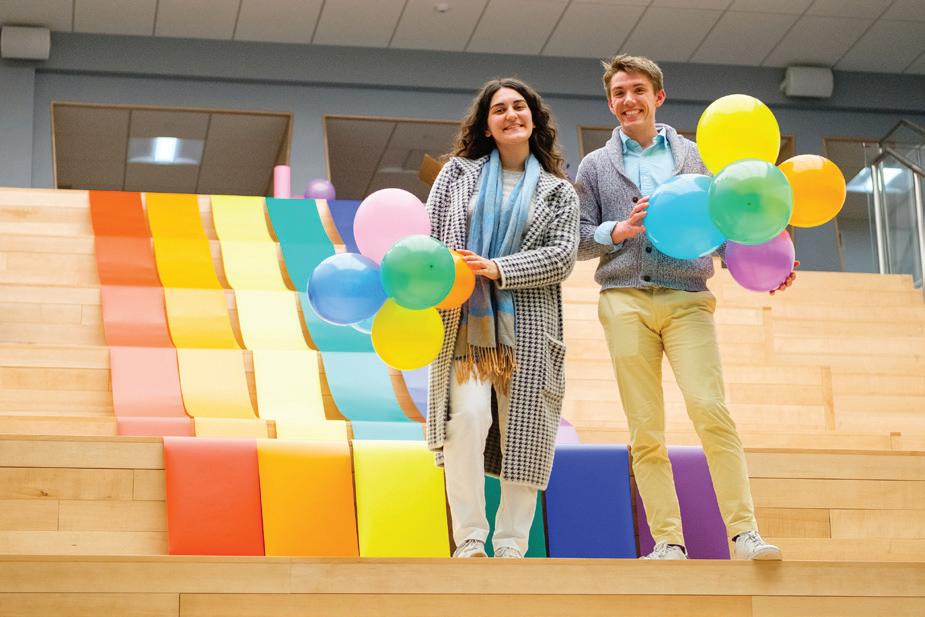
Cunningham, Sia Quinn, Sam Ferro, Sophia Zahran, and Conlan Hurley; Midnight Drive, a rock band that was started in March this year and consisting of Sam Ferro, Jake Paccione, Pat Cortelli, and Drayton Barrand; and the Vibrotones, an Indie Rock band that has existed since 2021 and consists of Jack Hamilton, Jack Keelan, Matt Testa, and Jeremy Orienza. Look out for our article next week to learn more about these openers!
system,” meaning that the system was overloaded and could not properly drain out the flood waters.
The future of flooding for Hoboken, statistically, is not reassuring. According to Risk Factor, which analyzes flood, fire, wind, air, and heat factors in specific areas, “there are 13,170 properties in Hoboken that have greater than a 26% chance of being severely affected by flooding over the next 30 years.” This amount makes up 87% of all properties in the Hoboken area, including both businesses and residential properties.
To help with future flood prediction, Stevens has secured nearly $1 million in federal funding
As the anticipation builds for Techfest 2024, undergraduate and graduate students can look forward to an unforgettable night of music and other activities. With Neon Trees headlining and an impressive lineup of student openers, this year’s event promises to celebrate talent and creativity. Mark your calendars for April 20, get ready to glow with excitement, and make memories that will last a lifetime.
will go to improving it more by attaining more sensors and equipment to track and benefit coastal New Jersey communities. Specifically, Muhammad Hajj, director of Stevens’s Davidson Lab, notes that “By collecting critical, perishable data before, during and after extreme coastal events, we will be able to validate the accuracy of our predictive models towards developing best practices for mitigation strategies of future hazards to coastal regions.” Stevens’ data in the past has been important in helping the U.S. Coast Guard, as well as some federal agencies, react to emergencies and aid in search and rescue missions. For the future, Hajj states that “Local communities and planners will be

Students interviewed after the event described it as a good introduction, having prior knowledge of 25% to 90% of the information presented and enjoying having a space for discussions like this on campus. The sponsors of the event were pleased with the high attendance and retention, saying it speaks to students being interested in sex education. Patrick Rosengrant, Assistant Director of Residential Education, described this event as having the highest attendance for an educational event he’d seen and that similar programs may be available in the future based on the response.
Presenters Lindsey and Marshall also described their enthusiasm for the audience, saying it exceeded their expectations and was “so much fun.” They give presentations to university students across the nation, noting that this program is often popular at tech
schools. They became sex educators because this information was not available to them in their education, and they became passionate about teaching it. In response to any backlash to the program, they reminded people that this is a voluntary event and they are looking to educate only people interested in listening. One comment repeated under the Instagram post and in the lead-up to the event called for a presentation on the male orgasm, and the organizers did not reject this idea. They were willing to provide information that people were interested in, but the point of the program focusing on female orgasms is because “the world already values the male orgasm,” and male orgasm education would be “preaching to the choir.” They extended their thanks to the audience, describing the honor of presenting to a standing audience.
CONTINUED FROM PAGE 1
2025 URS application is not yet open, students can find more information through the ICUNJ website.
Beyond opportunities to conduct their research, undergraduate students who attend confer-
ences like URS gain networking opportunities, experience with public speaking, and practice writing and communication skills, but also a chance to speak with others interested in similar topics.
The participation of Stevens students in ICUNJ’s URS reflects Stevens’s commitment to promoting undergraduate research. The diverse range of research presented at the symposium highlights the dedication of students and the support from across the university. The URS provides a platform for students to showcase their work, valuable networking opportunities, and skill development. As Stevens continues to advocate for increased undergraduate research, the URS and similar events catalyze a culture of innovation and inquiry among students. NJU
2 Friday, April 5 News Contact Us Corrections Disclaimer Policy on Letters to the Editor Policy on Op-Eds FULL LIST ON thestute.com/policies GENERAL.........................................EBOARD@THESTUTE.COM EDITOR-IN-CHIEF.........................EDITOR@THESTUTE.COM ADVERTISING.............................BUSINESS@THESTUTE.COM OFFICE.................................UNIVERSITY CENTER ROOM 216B The article from March 8th about Davis Hall has been edited on thestute.com All opinions and editorials reflect the views of their respective author(s). No Part of The Stute may be reproduced in any form, in whole or in part, without the written consent of the Editor-in-Chief. Cited references of The Stute are permitted. All members of the Stevens community are able to submit a Letter to the Editor to be published in The Stute. Letters must refer either to a piece published in The Stute or to The Stute in general and must be between 400 – 800 words in length. Submit letters to editor@thestute.com with your name and title (when applicable) or using our Google form. For writers who wish to write a Letter to the Editor anonymously, please see our policy on anonymity. The Editorial Board reserves the right to choose whether or not to publish a submitted Letter to the Editor based on a majority rule vote, and additionally reserves the right to edit letters for clarity or request authors to revise. Provided that the author approves the final version, The Stute reserves the right to edit letters according to our copy editing procedures, defined in our policies. All members of the Stevens community are able to submit a standalone opinion piece (otherwise known as an Op-Ed) to be published in The Stute. Op-Eds must be between 400 – 800 words, but longer submissions will be considered on a case-by-case basis. To submit an OpEd please email eboard@thestute.com with your name and title (when applicable) or using our Google form (tinyurl.com/submit-t0-stute). For writers who wish to write an Op-Ed anonymously, please see our policy on anonymity. The Editorial Board reserves the right to choose whether or not to publish a submitted Op-Ed based on a majority rule vote, and additionally reserves the right to edit Op-Eds for clarity or request authors to revise. Provided that the author approves the final version, The Stute reserves the right to edit Op-Eds according to our copy editing procedures, defined in our policies. Masthead Volume CXXI No. 23 Editorial Board Operations Board Staff & Contributors Claire Hannan Hima Thummala Doug Sousa Rachel Abraham Advait Dantuluri Stephen Pachucki Jack Scherban Madison Heller Sean Anderson Nicholas Smith Charlie Beall Katelyn Chiurri Meghana Mamadapur Kai Wong Nicole Cheung Ethan Kleschinsky Executive Board Operations Board EDITOR-IN-CHIEF......................................ISABELLA ZIV ‘25 BUSINESS MANAGER............................TANYA AVADIA ‘26 MANAGING EDITOR..............................ARTHUR SERRA ‘27 LAYOUT EDITOR................................JIYA JAISINGHANI ‘27 OUTREACH CHAIR.........................................AVA WANG ‘25 DIGITAL MANAGER...................................ABBY JACOBS ‘27 SECRETARY..........................................NICOLE GIARDINO ‘25 HEAD COPY EDITOR.....................EVAN PAPAGEORGE ‘26 NEWS EDITOR.........................................BEN KNOBLOCH ‘25 SCIENCE EDITOR..................................RIYANA PHADKE ‘27 OPINION EDITOR.............................KAYDEN CANNILLA ‘24 SPORTS EDITOR................................RUTHIE MULLISKY ‘26 FEATURES EDITOR................................TASHA
LAYOUT EDITOR...........................SHREYA ROY ‘27 ASSIS. LAYOUT EDITOR......................LIZ SEPULVEDA ‘27
tinyurl.com/stutesubmit
KAYDEN CANNILLA FOR THE STUTE
OP-ED
Getting past No
BY NICHOLAS SMITH ‘25
When I was twelve-yearsold, my mother quit her job. At the time, she was the vice president of the hospital for which she worked. Growing up, I occasionally worked weekends with my mom when she was Administrator on Duty (AOD). Since I was of age to remember, my mom and I would go to the hospital on those weekends, get a donut at the Dunkin’ downstairs, and I would watch as people chased her down with questions and concerns; she would calm them down and promptly respond to whatever was thrown her way. My naive twelve-year-old mind could not fathom why anyone would give up what I saw as a super cool job where you got to eat donuts and help everyone all day long. It wasn’t until years later that I realized my mother’s resignation was the greatest form of advocacy I’ve witnessed. My mother had a sexist and malicious boss for years; this inhibited her ability to grow as a professional and, most importantly, be present for our family. Today, part of my mother’s work is coaching young female leaders to know they always have a seat at the table.
Last November, I was elected President of the Student Government Association (SGA). Each year, a small cohort of students across the country is selected as the chief advocate of their respective student body. The responsibilities are unique based on the institution; however, we’re all united in that we aspire to make an ambitious and long-lasting impact on our peers. Despite these ambitions, one word can derail that appetite for change: “No.”
Students are removed from many of the decisions that affect the student experience. The experience in undergraduate education is changing across America: the focus of college education has become identity development in recent years. Access to higher education is an ever-mounting burden on students. The reputations of elite institutions have declined at the top US schools. Universities are spending like crazy, including steep increases in staff and administrative hiring. Student affairs administrators at some institutions impose and enforce far-reaching and broad community standards that predicate the type of speech allowed, conduct policies, selection processes for resources, and more. At some institutions, the enforcement of these community standards has led to a student committing suicide.
Anecdotally, I constantly listen to my friends and peers’ criticisms of the student experience. As students, increasing administrative presence and student support mean more and more is being decided for us. There has never been a greater imperative to get involved and find your seat at the table. Without students involved in these conversations, our voices would not be heard.
Student leaders and administrators have one thing in common: we’re all trying to improve. In my experience, every administrator I’ve worked with is here


for the right reason. They want to make a difference in students’ lives.
I wholeheartedly believe that the practices students fight against were well-intentioned, and depending on the context, I support the efforts of administrators. Higher education leaders put in place to improve our student experience. But at what point do students get to intervene and dissent? When you advocate for yourself, what do you do as a student when you hear the inevitable “no” and your voice feels lost?
As SGA President, I have taken my fair share of “no” from university leaders. I share with you some strategies I’ve learned to keep pushing forward. As my mom regularly reminds me, even in the face of “no,” you always have a seat at the table:
1. Understand why they haven’t changed already: A prominent social psychologist from The Wharton School, Jonah Berger, researched how to change someone’s mind. The most important question he details in his book, The Catalyst, is asking why people haven’t changed. Asking the right questions is vital to understanding an issue’s background, history, and complexities, and it serves as the best starting point to get past no. For instance, every year, there is a renewed push from a new group of students to address the Gateway North building’s naming. Ambitious student leaders renewed their push to remove the name of the donor of the building because his political and social views do not align with the values of our campus. What is often missed from this approach is understanding why the university hasn’t changed already. In this case, both parties are contractually obligated to keep the name on the building. If you understand why people haven’t changed already, you can save your ideas and energy and better direct it toward solutions that are more within reach and can be addressed faster.
2. Work with what already exists (The Endowment Effect): People value things they own and do more than their actual value. Particularly in the context of a university, stakeholders have an emotional attachment to buildings and programs that may no longer be a priority, but because of the perceived value being greater than the actual value, universities often don’t take things away; we rarely eliminate programs, knock down buildings that don’t work anymore, or counsel faculty and staff to leave when they no longer embody the values of our community. Part of this is due to many stakeholders, alumni, who have a say. When making a change, consider the existing processes rather than starting something new or destroying something that’s been built. For example, this semester, the SGA is investigating the promotion process of tenured faculty members. We are exploring this because, an-


ecdotally, students find tenured faculty members to be the least student-centric. Originally as a solution, we considered adding a new step to the promotion process. Instead, since we already highlight excellent faculty members via surveys and award nominations with this data, we can create a formalized list of rising star faculty, so we ensure that student-centric professors do not go unrecognized. In my experience, there is an intense emotional attachment to the process and university infrastructure. Student leaders must move fast to achieve their vision because time on campus is limited. Consider working with the things that already exist because people are emotionally attached to them, and change can occur much faster—sometimes—if you use what’s already available to the stakeholders involved.
3. Reframe your approach and reasoning for change: Getting to the root of a stakeholder’s motivation is vital to help you best frame your change request. One of the first large initiatives I worked on in the SGA was mid-semester course surveys. The objective of mid-semester course surveys includes giving students the opportunity for instructors to better align their course with students’ feedback mid-semester when there is time to change as opposed to the end of the semester. Originally, when I presented to our faculty senate, I framed this as being beneficial to students. Students had concerns, and they should be heard and changed before the course was over. This logic did not get much bite. However, when I reframed this solution to consider the perspective of the faculty, I tied the motivator to something important to them. Faculty have annual evaluations with the Dean. As part of this review, their student course survey responses are considered. I explained that mid-semester feedback was an opportunity for instructors to take in feedback and make changes so they are evaluated higher at the end of the semester. Faculty are incentivized to perform well in their course surveys because teaching awards are tied to their performance, which can help them with their promotions. Reframing your ambitions to align with the group you’re trying to mobilize is vital. Students are not entitled to everything they want. There are constraints. But like my mom showed me, every person — every student, is entitled to express their opinion and advocate on their behalf. Some practices that deeply affect our lives as students are not decided by us. Students across the country are being spoken for by an increasing presence of university leaders. Overwhelmingly, university leaders are our partners. They are here to help us. However, in some cases, these systems lack student perspective and can be oppressive to student advocacy. This is the imperative to take your seat at the table.


PRIDE WEEK 2024 IS NEXT WEEK
SUNDAY, APRIL 7
PRIDE Senate Meeting*
Student Government Association
The Steps in Gateway North, 6 p.m.
Decorate the steps and talk about the state of Stevens in the context of LGBTQ+ advocacy and representation.
MONDAY, APRIL 8
Safe Zone LGBTQ+ Allyship Workshop
Office of Student Culture and Belonging Babbio 203, 3:30-5:30 p.m.
The Stevens Safe Zone Ally Program is a campus-wide initiative designed to educate Stevens community members on LGBTQ+ identity, current (in)justices impacting the LGBTQ+ community, and visibly identify Stevens staff, students, and faculty who seek to support the campus’ LGBTQ+ population. All students are encouraged to attend a Safe Zone workshop in order to learn about important campus resources, understand how to better support LGBTQ+ peers.
Gender Indentity + Equity Workshop
Office of Student Culture and Belonging Online, 9-10:30 p.m.
Understand foundational language, concepts and terminology related to gender and sex, dispel myths about gender, listen to experiences from trans and non-binary folks, learn tips to create a gender-inclusive community, and review resources locally and on campus. The Zoom link for this event can be found on DuckLink.
TUESDAY, APRIL 9
Torch Pin Making
Torch Alliance Howe Skyline Suite, 4-6 p.m.
Torch is an organization where people who identify as LGBTQ+, who are questioning their sexuality, or who simply want to support the LGBTQ+ community can come together and socialize without fear of alienation. Join Torch in making custom pins.
WEDNESDAY, APRIL 10
LGBTQ+ Resource Fair
Co-hosting organizations listed below UCC Lobby, 3-5 p.m.
Learn about campus organizations and resources like Torch Alliance, oSTEM, Stevens Health Services, CAPS, and the Office of Student Culture and Belonging and meet local partners from the Hudson Pride Center. Free giveaways, quick and confidential HIV testing, queer sex education, prizes and more!
Perfume Making with oSTEM*
Out in Science, Technology, Engineering, and Math UCC Student Commons (2nd floor) , 8-10 p.m.
Join oSTEM to make your own perfume or cologne! Materials will be provided to attendees.
Jeopardy Jam!*
Theta Phi Alpha Bissinger (Howe 4th Floor), 9:15 p.m.
Watch different organizations compete in a Jeopardy game with DEI topics such as history, finish the lyrics from LGBTQ+ artists, and more! It costs $5 to come to the event,
THURSDAY, APRIL 11
Lavender Luncheon
Office of Student Culture and Belonging UCC Gallery, 12-1:30 p.m.
Grab your lunch and join our LGBTQ+ affinity gathering open to faculty, staff, students and alumni, in celebration of Pride Week at Stevens! Networking, new connections and good conversation provided, just BYOL (bring your own lunch). Register on Ducklink or email studentbelonging@ stevens.edu for more information.
FRIDAY, APRIL 12
Pride After Dark*
Student Government Association, DEIBA Committee UCC Tech Flex, 8:30
he purpose of PAD is to encourage unity and allyship amongst campus, and to help release any stigmas the people on campus may hold about the LGBTQ+ community.
* Denotes events open to only undergraduate students.
Friday, April 5 3 News
Office of Student Culture and Belonging

MENTAL HEALTH AWARENESS MONTH
What will it take to improve mental health in STEM?
BY CHARLES BEALL B.S. ‘23 & PHD STUDENT
Disclaimer: This article discusses topics of mental health, depression, and suicide.
The Stevens motto, Per Aspera Ad Astra, or “Through Adversity, To the Stars,” is indeed a stellar choice of words to describe the experience at this tech school. Students here, many of them in science, technology, engineering, and math (STEM) fields, often experience heavy course loads, an unending and unrelenting list of deadlines and responsibilities, and a lopsided worklife imbalance.
We students tend to quickly bond over this shared struggle. What’s more, as a primarily STEM school, we are not alone either. An opinion article recently published in the American Chemical Society (ACS) Polymers Auby Christian W. Pester, Gina Noh (both at Pennsylvania State University), and Andi Fu (of University of Pennsylvania)
titled “On the Importance of Mental Health in STEM” provides a host of statistics related to the growing mental health crisis present in STEM culture.
31% of individuals in the U.S. younger than 25 report some form of mental illness — depression and anxiety disorders being common. Moreover, around two-thirds of all college students are in this age group. Going to college, while offering several benefits, can also introduce several stressors that exacerbate mental health struggles.
Pester et al. mention the difficulty in finding a community in a new place and resulting loneliness; “postevent blues,” a phenomenon where celebrating accomplishments quickly gets replaced by dread over the next big hurdle to overcome; and burnout, a prevalent “occupational phenomenon.” STEM culture, in particular, feeds into the struggle, pushing the narrative that such fields are inherently challenging and require a great deal of adversity to master.
A result of this, Pester et al. note, is “self-doubt” among students “about something being ‘supposed’ to be hard and whether the levels of stress and sacrifice are normal, appropriate, and, in fact, necessary.” Additionally, STEM culture can often play the “suffering Olympics,” where unhealthy behaviors such as lack of sleep to finish assignments are seen as signs of strength or fortitude and even bragged about. Pester et al., after outlining these issues, spend the rest of the article sharing several practices that can help STEM students improve their mental hygiene — trying to get more regular sleep, attending therapy sessions, spending time with friends, going outside, listening to music, and exercising — as well as ways to support others who are struggling. But the point they stress throughout is that STEM culture as a whole must come together to combat the mental health crisis engulfing its newest members: college students and early-career academics or industry members.
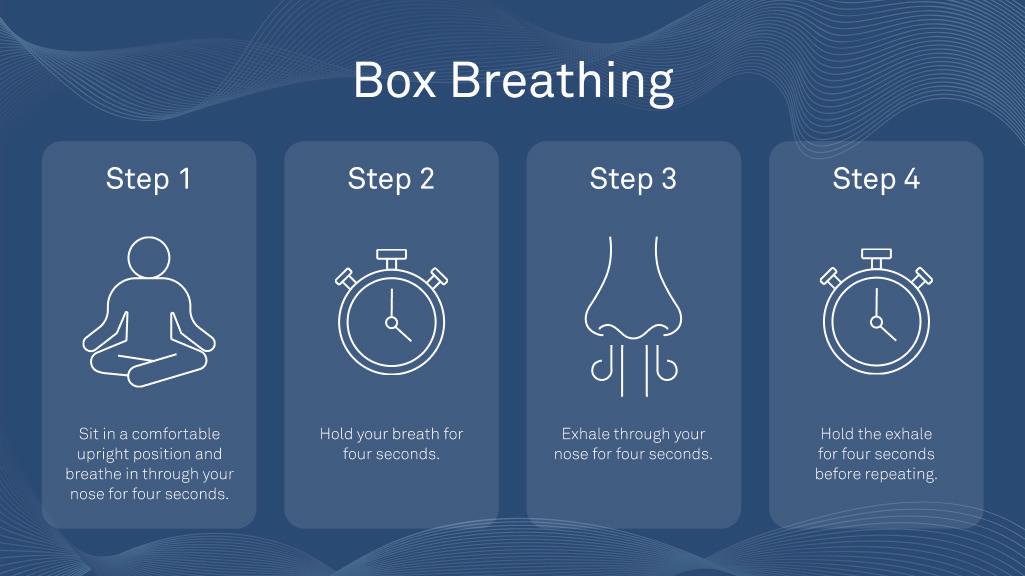
Want to reduce stress? Listen to music
BY TANYA AVADIA, BUSINESS MANAGER
Walking to class, studying, hanging out with friends, getting a workout in — what do all of these activities have in common?
Besides the fact that all college students probably do all of the aforementioned activities on a regular basis, all of these activities can be enhanced by music.
While most people listen to music for entertainment, many studies show that music is a powerful tool that can help alleviate much more than just feelings of stress. Some of the benefits associated with listening to music are outlined in the studies below:
Reduces cortisol levels:
A 2021 study found that adults who listened to music, both of their personal choice and from a neutral selection, reduced their cortisol levels regardless of the type of music.
Reduces burnout:
In the operating room, a sixweek study found that staff who were scheduled to listen to 30 minutes of music at the end of each working day experienced less stress and less emotional exhaustion.
Helps with falling asleep:
A study conducted determined that listening to music can aid in falling asleep and that 62% of adults use some form of sounds to fall asleep. Beyond that, the study also found that those who rely on music more to fall asleep were more likely to experience better quality sleep compared to those who relied on it less.
Reduces anxiety and depression:
Music has the effect of calming down anxiety symptoms and providing increased levels of confidence and motivation when listened to in group settings for depressed individuals. This is why music therapy is becoming increasingly more widespread to help those who suffer from depression and anxiety.
Improves quality of life:
Several studies looked into the longer-term effects of music on mental health and found that it leads to increased quality of life. For example, even in trying times, like the COVID-19 pandemic, music was the one thing universally that kept people going and allowed them to deal with the abnormality of isolating and transitioning to a remote lifestyle.
With studies finding a great many benefits related to listening to music, certain practices and activities that previously had no relationship with music are beginning to integrate music. Some of those activities include:
Mediation:
Meditation aims to calm the body and focus the mind is increasingly growing popular. One form of meditation that is catching on is guided meditation or meditation music. Both versions of the practice help people focus, relieve stressors, and lower the heart rate.
Music Therapy:
While therapy is a practice that is growing within society, music therapy aims to provide many of the same things just with a musical twist. Musical therapists often
work with their clients on getting them to listen to different types of music, play music, or even create their own music in an effort to work through different emotions and build positivity.
Focusing Tool:
While music may seem like it’s counterproductive to focusing, it can actually help productivity. Music is said to provide motivation for completing certain tasks and offers better concentration for completing complex tasks. Hence why study playlists are a growing phenomenon and why some companies have started allowing their employees to listen to music via headphones while completing their tasks.
While the correlation between music, productivity, and positivity is now supported by countless studies, researchers are now looking into whether the type of music one listens to has specific effects. While most studies historically have utilized classical music, that does not necessarily dictate that classical music is better. In fact, ongoing research has found that different types of music can be used for different purposes. For example, classical music is typically used for relaxation due to its soothing nature. Rap music is associated with providing motivation and inspiration, especially for those who are going through difficult times. Heavy metal music can help personal development. Therefore, if you want to elevate your own life using music, diversify your musical tastes. While walking to your 8 a.m. lecture that you had no will to go to, listen to rap, or when studying music for a big exam, lock in with some classical music.
Many groups on Stevens have sought to address some of these issues. Over the past few years, the Student Government Association has partnered with Counseling and Psychological Services (CAPS) to host speakers who have discussed destructive perfectionism, finding happiness, and raising awareness about suicide. CAPS and several other offices and student organizations regularly host mental healththemed or de-stress events.
However, the 10-year Strategic Plan released by Stevens last year only mentions mental health once (in reference to the struggles faced during the COVID pandemic), and its nine goals have, at best, an indirect relation to improving mental hygiene. Students also report that burnout or work-life imbalance makes it difficult to attend events mentioned above or work on mental hygiene on their own.
Downplaying the concerns of mental health can come with significant risks and end in unthinkable tragedy. This occurred in the
2021-2022 school year at Worcester Polytechnic Institute (WPI), a tech school like Stevens. Seven students died over the course of six months, six of them by suicide. The administration rapidly assembled a task force and hired an independent reviewer to determine supportive and preventative measures, which were implemented with rapid speed. Despite some criticism, the institution was open to the public about its struggles throughout, and those in the task force hope other institutions will follow suit in adopting such practices around mental health and mental hygiene.
No more students should have to die for universities to take mental health more seriously. From nearby institutions like WPI and Drexel to farther away schools like the University of Washington, STEM students are struggling with mental health. We will do our part to continue to support each other, but the leadership in academia must strive for much more than the promises of adversity before reaching the stars.



OP-ED
PHOTO COURTESY OF OURARING.COM
Feature
Baseball wins two, loses one in three-game series over Delaware Valley
BY KAI WONG, SPORTS WRITER
In a recent three-game series against Delaware Valley University, the Stevens Baseball team added two wins and a loss to their now overall 14-7 record. On Friday, March 29, the team secured a 10-6 victory, and the next day, Saturday, March 30, split the double-header with a 4-5 loss followed by a 13-0 win.
In the Friday game, Eli Somers led the Ducks with four hits and three runs. Sophomore pitcher Erik Sibbach helped earn the 10-6 victory, lasting almost seven innings on the mound and giving up only four hits and three runs while striking out nine. Senior pitcher Jacob Buurman followed suit and continued this strong pitching momentum, striking out both batters in the ninth with bases loaded.
Starting the game at bat was graduate student Ben Tobio who hit a single and later reached second on a passed ball and then third after Zachary Boykin
grounded out. Tobio would put the Ducks up 1-0 after a single from graduate student Michael Reyes. The Aggies matched the Ducks’ intensity and took the lead to put the score 3-1 going into the third inning. To answer, first-year Chip Krese, Tobio, Somers, and first-year Garret Wolf each scored a run in the fourth inning.
In the beginning of the seventh inning, Stevens added two more to bring the score to 7-3, as senior Frank Tonina brought Reyes home to score on an RBI single. In the eighth, Reyes brought home both Tobio and Krese with a single as the Ducks went up 103. Delaware Valley put up three more runs between the eighth and ninth innings to bring the score to 10-6, but it was not enough as Stevens secured the win.
In the doubleheader on Saturday, Boykin led the Ducks with three hits, four RBI, and two runs as Stevens dropped the first game 4-5, but won 13-0 in the second game. Graduate student pitcher Leo Bristow started the first game,
Softball splits a win and a loss in doubleheader against Delaware Valley
BY KAI WONG, SPORTS WRITER
On Friday, March 29, the Stevens Softball team competed in a Middle Atlantic Conference (MAC) Freedom doubleheader against Delaware Valley, resulting in an 8-5 victory and a 2-3 loss. Third-year student Rachael Prescott led the Ducks with four RBIs and four hits with two runs across the two games. These games bring the Ducks’ record to 11-9 overall and 3-3 in the MAC Freedom conference.
Sophomore pitcher Kyra Fischer helped earn the victory in the first game, pitching almost six innings, striking out six batters, and giving up 13 hits and eight runs. To start off the game, senior Jessica Guerrero and graduate student Elise Fauske each walked. Prescott then reached on a fielder’s choice and reached second on the throw, while Fauske made her way to third. Junior Madison Subbiondo then tripled to bring both runs home as the Ducks took an early 2-0 lead.
However, to answer this lead, the Aggies scored three runs in the bottom of the first to bring the score to 2-3. To start the third inning, first-year Emma Quattrochi walked and then stole second. Guerrero was walked, and Fauske hit a single to load the bases. Prescott was walked as well, while a run was scored to tie the game 3-3.
In the bottom of the fourth, Delaware Valley scored two more runs as the score jumped to 5-3, giving them the lead. To answer this deficit in the seventh inning, Quattrochi hit a single, followed
by a double from Guerrero. Firstyear Maria Dante followed with a pinch-hit, delivering an RBI double to score Quattrochi. Prescott hit a single and advanced to second, scoring both runners and allowing the Ducks to take a 6-5 lead. The Ducks finished out the inning, scoring five runs total, and secured a win in game one.
In game two, sophomore pitcher Ella Tozduman started the game, impressively allowing zero runs and giving up just six hits. Fischer followed, pitching the final three innings, allowing two runs and five hits.
In the first inning, Stevens jumped out to a 1-0 lead as Fauske scored on a wild pitch. Both teams were unable to score throughout the game, as pitchers on both teams had a spectacular game. With the score remaining 1-0 in the bottom of the seventh, the Aggies scored one run, tying the game and forcing extra innings. Although Stevens had runners on second and third in the eighth inning, they were unfortunately unable to score any runs. In the 10th innings, the Ducks found another run thanks to an RBI from Prescott, allowing Fauske to score and bringing the score to 2-1. However, the Aggies quickly answered and scored two runs in the bottom of the tenth to secure their 3-2 victory in game two.
The Ducks are now 3-1 in their last four conference games. Stevens is also now 9-1 all-time against the Aggies. The team returns to host Manhattanville College in a doubleheader on Saturday, March 30 for their Strikeout Cancer Game.
pitching for four innings and only giving up four runs and six hits. Pitcher Matt Villapiano pitched two innings, walked two batters, and gave up one run and two hits.
In the first game, Delaware Valley scored twice in the first inning and added two more in the second, providing them with an early 4-0 lead. Needing runs, Tonina hit a double to kick off the bottom of the fifth, and senior Christian Kreiser and first-year Chip Krese tacked on back-to-back walks to load the bases. Tobio hit a ground ball, with every runner advanc ing while Tonina was out at the plate. Somers hit a single to bring home Kreiser and Krese. Boykin hit a double to clear the bases but was thrown out trying to make it a triple, tying the game at 4-4. Delaware Valley scored once in the seventh as they secured their victory for the first game.
In the second game, Stevens came back against the Aggies in the first inning. Tobio hit a double to start the game, while Somers followed with a single to put runners on third and first.
Boykin picked up an RBI for Ste vens as he singled to bring home Tobio. As bases were loaded mul tiple times throughout the game, the Ducks were on cruise control, taking a 13-0 lead and holding on for the victory through the sev enth inning.
Across all three games, Ste vens is now 10-3 all-time against the Aggies. The Ducks hop back into the win column as they pre pare to take on No. 23/19 Montclair State on Monday, April 1.
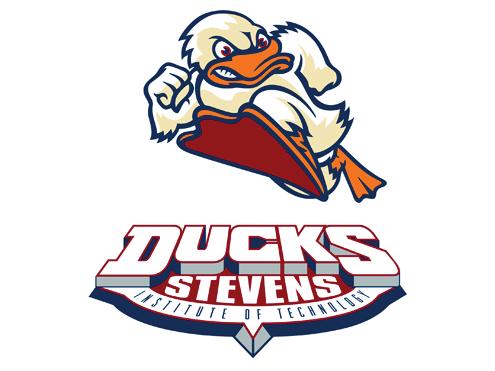
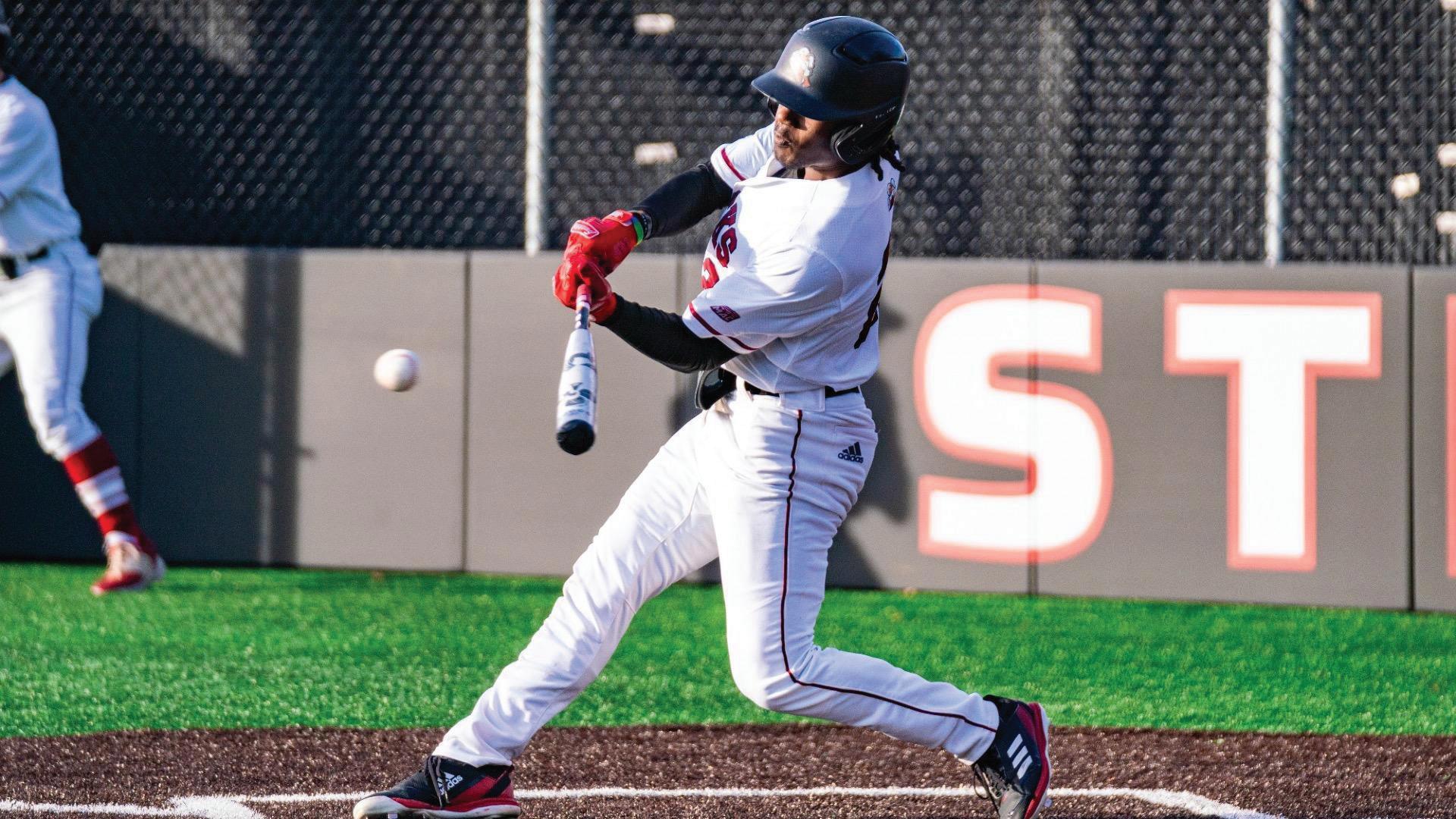
Catching up with club sports: Ultimate Frisbee and Powerlifting
BY ABBY JACOBS, DIGITAL MANAGER
Ultimate Frisbee
Ultimate Frisbee is now in the third month of their spring season, which began halfway through January. Their first tournament, National Ultimate’s Bring the Huckus, took place on the weekend of February 24-25, where the team went 3-1 in pool play on Saturday and took fifth overall.
The following weekend, March 2-3, they returned to Vineland, NJ, where they took on National Ultimate’s Philly Special. A downpour on Saturday led to a reseeding of the entire tournament, the Ducks having only played two games, though four were originally scheduled. Sunday, the Ducks went 0-3 in pool, leading to a fight for seventh against Rowan University where they clinched the victory.
The Ducks jumped right back into their season after spring break, attending National Ultimate’s Garden State tournament the weekend of March 23-24 to wrap up their regular season. Another day of rain on Saturday led the team to play only two of their three scheduled games, where they went 1-2, the victory coming from the other team’s forfeit of this game. They resumed pool play on Sunday morning, where they took two victories, falling fourth in their pool. Due to the tournament’s setup, the Ducks did not qualify for pool play and eventually achieved 10th place.
Team captain and senior Daniel Partika has high hopes for the team, stating, “We just finished our last tournament and are looking ahead to sectionals in a
couple of weeks. The vibe of the team is great at practices as we experiment with new ideas.”
Powerlifting
Despite a slow start at the beginning of the semester due to their gym shutting down, the Powerlifting team has since risen to a national level. Three Stevens students, senior Chloe Brenna, her classmate James Johnsen, and sophomore Abigail Izzo, will be competing in Collegiate Nationals in Atlanta, GA, from Thursday, April 11, to Sunday, April 14. These are the first students in Stevens Powerlifting history who will attend this competition.
The three qualified for nationals following the team’s placement at the NJ Collegiate Championships last December. Brenna, Johnsen, and Izzo each took gold in Women’s 56 kg, Men’s 75 kg, and Women’s 52 kg respectively, and were three of six members of the team that placed in the top three of their weight classes. Additionally, this was the first time the team had competed in the Collegiate State Powerlifting Championships, where they took third overall in the team category.
President Raymond Murphy stated that they’ve “been really happy with everyone’s progress over the semester and are excited to compete.” The team is now looking ahead to another three competitions, which will take place on Saturday, April 20, at the Performance Strength Academy, Saturday, April 27 on campus, hosted by the team, and Saturday, May 4, at the 2024 USA Powerlifting SBWC Spring Classic in Brooklyn, NY.
STEVENS SCOREBOARD
SAT, APR 6
WOMEN’S AND MEN’S TRACK AND FIELD
Muhlenberg Outdoor Invitational Allentown, PA 10 a.m.
BASEBALL
Arcadia University
Glenside, PA 12 p.m./2:30 p.m.
WOMEN’S AND MEN’S TENNIS
Misericordia University
Dallas, PA 12 p.m./ 1 p.m.
SOFTBALL
Arcadia University
Weehawken, NJ 1 p.m./3 p.m.
WOMEN’S AND MEN’S LACROSSE
Misericordia University
Hoboken, NJ 1 p.m.
Misericordia University
Dallas, PA 1 p.m.
MEN’S GOLF
Hershey Cup–Round On
Hershey, PA 8 a.m.
MEN’S TENNIS
New York University
New York, NY 1 p.m.
MON, APR 8
MEN’S GOLF
Hershey Cup–Round Two
Hershey, PA 8:30 a.m.
WED, MAR 13
WOMEN’S TENNIS
SUNY New Paltz
Hoboken, NJ 4 p.m.
WOMEN’S AND MEN’S LACROSSE
King’s College (Pa.)
Hoboken, NJ 5 p.m./7 p.m.
Friday, April 5 5
ON DECK IN SPORTS FRI, APR 5
Sports
DATE TEAM OPPONENT LOCATION SCORE WED, MAR 27 MEN'S TENNIS KALAMAZOO COLLEGE EDGEWATER, NJ W (3-1) MEN'S LACROSSE EASTERN UNIVERSITY HOBOKEN, NJ W (22-7) FRI, MAR 29 SOFTBALL DELAWARE VALLEY UNIVERSITY DOYLESTOWN, PA W (8-5), L(2-3) WOMEN'S TENNIS WASHINGTON COLLEGE (MD.) CHESTERTOWN, MD W (4-3) WOMEN'S AND MEN'S TRACK & FIELD DANNY CURRAN INVITATIONAL–DAY 1 CHESTER, PA COMPLETED BASEBALL DELAWARE VALLEY UNIVERSITY DOYLESTOWN, PA W (10-6) MEN'S TENNIS NO, 46 HAVERFORD COLLEGE HAVERFORD, PA W (5-4) SAT, MAR 30 MEN'S TENNIS NO. 11 SWARTHMORE COLLEGE SWARTHMORE, PA L (1-8) WOMEN'S AND MEN'S TRACK & FIELD DANNY CURRAN INVITATIONAL–DAY 2 CHESTER, PA COMPLETED SOFTBALL MANHATTANVILLE COLLEGE WEEHAWKEN, NJ L (0-2), L (3-5) BASEBALL DELAWARE VALLEY UNIVERSITY HOBOKEN, NJ L (4-5), W (13-0) WOMEN'S LACROSSE NO. 19 AMHERST COLLEGE AMHERST, MA L (10-11) MEN'S VOLLEYBALL HOOD COLLEGE, VASAR COLLEGE HOBOKEN, NJ W (3-0), W (3-0) MON, APR 1 MEN'S GOLF ALVERNIA INVITATIONAL–ROUND ONE MOHNTON, PA 2ND of 10 BASEBALL MONTCLAIR STATE UNIVERSITY MONTCLAIR, NJ L
(2-3)
BASEBALL Arcadia University Hoboken, NJ 3 p.m. SUN, APR 7
PHOTO COURTESY OF STEVENSDUCKS.COM
(SHOT BY DAVE JANOSZ)COM
Duke shuts down century-old plant collection
BY MEGHANA MAMADAPUR, STAFF WRITER
Duke University has announced that it will close its herbarium, which hosts over 825,000 plants, fungi, and algae specimens. Duke’s herbarium is one of the most di verse in the nation and has existed for over a century. Scientists are pushing for Duke to reconsider as the herbarium has helped scien tists make numerous discoveries regarding plant life and human environmental impact.
Erika Edwards, curator of the Yale Herbarium, said, “This is such a devastating blow for biodiversi ty science. The entire communi ty is simultaneously shocked and outraged.” Many others have also spoken out against this decision, with a petition circulating from the Natural Science Collections Alli ance and six other societies. The petition currently has over 11,000 signatures. The Duke Herbarium is the second-largest private university herbarium in the United States, with specimens that are over two centuries old.
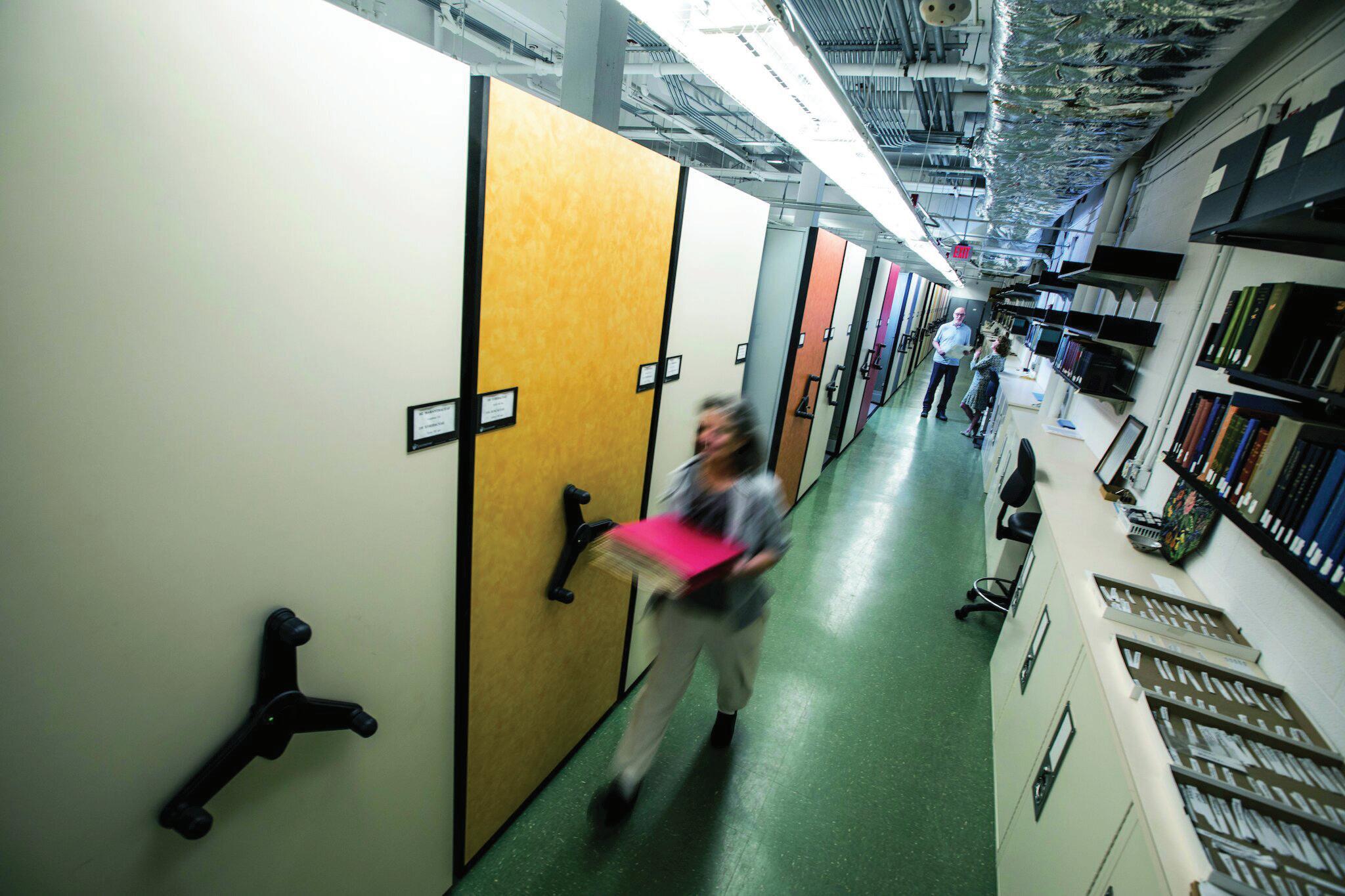
The Natural Science Collections Alliance wrote a letter to Duke University, explicitly stating, “Duke’s decision to forgo responsibility of their herbarium specimens sets a terrible precedent.” With a collection as large as Duke’s, many scientists felt a large drawback. The university sent an email to certain staff, announcing that the collection would be moved elsewhere in the next few years. According to Kathleen Pryer, the director of the herbarium since 2005, she was unaware of the administration’s decision to shut down the collection. She was not included in any conversations before the email was sent to the herbarium staff.
Many other universities across the country utilize the herbarium for research in molecular, biochemical, and cytogenetic studies.
Professors from the University of Maine, the University of Michigan, the University of North Car-
olina at Chapel Hill, Texas Tech University, and the University of California, Berkeley have all expressed frustration with the closing. The email sent to herbarium staff regarding the closure read, “At the same time, we have carefully considered the requirements to maintain [the herbarium] in the manner in which it should be maintained, which would include multiple endowed faculty and staff lines as well as state-of-theart facilities.” The university also announced that alternatives were proposed for gathering funding and creating a new building for the herbarium, but those ultimately did not pan out. The cost of maintenance, as well as staffing, would be approximately $25 million, as calculated by Duke.
However, Pryer has contested this fact, claiming that a Duke donor was willing to contribute $1 million from a $3 million proposal, yet Duke did not entertain the proposal and instead immediately shut it down. Currently, the university plans to move the herbar-
ium within the next two or three years. The process to relocate 825,000 plant specimens requires more time, yet Duke plans on targeting a maximum of 3 years. While this news has been disheartening for many scientists, the current projects have huge potential — sequencing genomes, combating mass extinction, and planting seeds of decades-old plants. These discoveries feed the hope that Duke herbarium’s plant species will find a home where they will continue to provide research and inspiration for countless other scientists.
Duke University has announced that it will close its herbarium, which hosts over 825,000 plants, fungi, and algae specimens. Duke’s herbarium is one of the most diverse in the nation and has existed for over a century. Scientists are pushing for Duke to reconsider as the herbarium has helped scientists make numerous discoveries regarding plant life and human environmental impact.
Erika Edwards, curator of the
Giant turtles used to live with humans
BY RIYANA PHADKE, SCIENCE EDITOR
Today’s turtles are smaller than humans, but only 9,000 years ago, turtles the size of couches inhabited much of the Brazilian Amazon. The turtle, known scientifically as Peltocephalus maturin, was discovered based on a fossilized jawbone that gold miners dug up in 2007 near the Amazonian city of Porto Velho. This was no ordinary bone, however — this jaw was massive.
“When I saw the material, I was very excited because of its size, so we managed to bring the specimen to our lab,” at the University of São Paulo, says vertebrate paleontologist Gabriel Ferreira, now at the University of Tübingen in Germany.
Ferreira and his colleagues measured the fossil and compared it to both living and extinct turtles, and they were able to determine that the Maturin was a new species to science. Maturin
receives its name from Stephen King’s cosmic turtle, which acts as a higher power in many of his novels. The Peltocephalus maturin’s closest relative living today is the aquatic big-headed Amazon River turtle (P. dumerilianus), which has a shell that is only about 50 centimeters long. In comparison, Maturin’s shell is estimated to be nearly 2 meters long.
Scientists believe that the jawbone of the giant turtle is the largest among any other turtle, making P. maturin one of the largest turtles to ever exist. What makes this turtle so fascinating is not just its size but also when it lived.
Ferreira’s team noted that radiocarbon geochemical analysis estimated the fossil to be between 40,000 and 9,000 years old. Freshwater turtles of a similar size to P. maturin lived much earlier in time. The maturin seems to be the only giant turtle that could have encountered human habitation, as there is evidence of
humanity in the Amazon dating back to more than 11,000 years ago. In 2023, Ferreira and other researchers published a turtle body size evolution analysis, which suggested that freshwater turtles tend to stay a similar size over evolutionary time, with occasional evolution of large species. Previous studies suggested that turtle body size may be influenced by factors such as environmental temperatures, as seen in other vertebrate groups. However, Ferreira noted, “We could not find any evidence of temperature influencing the mean or maximum body size in turtles, so we still do not know what could be driving the evolution of those giants in the past.”
The Peltocephalus maturin is thought to have gone extinct due to human activity in the Amazon. Similar to many other large animals, overkill is considered to be one of the driving factors for extinction across numerous species.
Yale Herbarium, said, “This is such a devastating blow for biodiversity science. The entire community is simultaneously shocked and outraged.” Many others have also spoken out against this decision, with a petition circulating from the Natural Science Collections Alliance and six other societies. The petition currently has over 11,000 signatures. The Duke Herbarium is the second-largest private university herbarium in the United States, with specimens that are over two centuries old. The Natural Science Collections Alliance wrote a letter to Duke University, explicitly stating, “Duke’s decision to forgo responsibility of their herbarium specimens sets a terrible precedent.” With a collection as large as Duke’s, many scientists felt a large drawback. The university sent an email to certain staff, announcing that the collection would be moved elsewhere in the next few years. According to Kathleen Pryer, the director of the herbarium since 2005, she was unaware of the administration’s
decision to shut down the collection. She was not included in any conversations before the email was sent to the herbarium staff.
Many other universities across the country utilize the herbarium for research in molecular, biochemical, and cytogenetic studies.
Professors from the University of Maine, the University of Michigan, the University of North Carolina at Chapel Hill, Texas Tech University, and the University of California, Berkeley have all expressed frustration with the closing. The email sent to herbarium staff regarding the closure read, “At the same time, we have carefully considered the requirements to maintain [the herbarium] in the manner in which it should be maintained, which would include multiple endowed faculty and staff lines as well as state-of-theart facilities.” The university also announced that alternatives were proposed for gathering funding and creating a new building for the herbarium, but those ultimately did not pan out. The cost of maintenance, as well as staffing, would be approximately $25 million, as calculated by Duke.
However, Pryer has contested this fact, claiming that a Duke donor was willing to contribute $1 million from a $3 million proposal, yet Duke did not entertain the proposal and instead immediately shut it down. Currently, the university plans to move the herbarium within the next two or three years. The process to relocate 825,000 plant specimens requires more time, yet Duke plans on targeting a maximum of 3 years.
While this news has been disheartening for many scientists, the current projects have huge potential — sequencing genomes, combating mass extinction, and planting seeds of decades-old plants. These discoveries feed the hope that Duke herbarium’s plant species will find a home where they will continue to provide research and inspiration for countless other scientists.
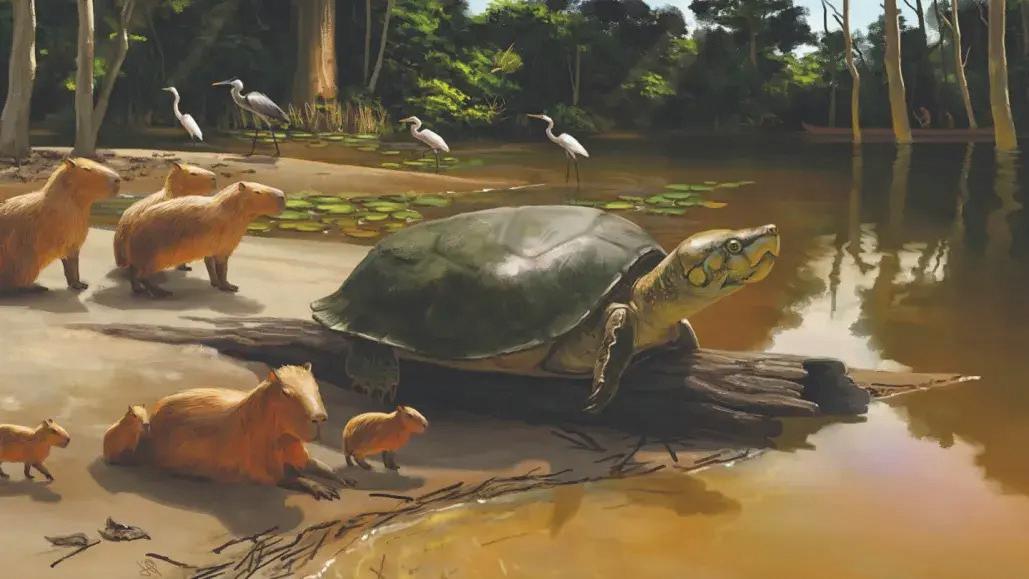


6 Friday, April 5 Science INTERESTED IN SCIENCE JOURNALISM? Join our Science writing team! Reach out to Riyana Phadke (rphadke@stevens.edu) for more information No experience necessary thestute.com/category/science
PHOTO COURTESY OF SENCKENBERG GESELLSCHAFT FÜR NATURFORSCHUNG
PHOTO COURTESY OF SCIENCENEWS.ORG
PHOTO COURTESY OF THE NEW YORK TIMES (SHOT BY CHRIS HILDRETH)
Opinion
THE STUTE EDITORIAL Stute E-Board 2024-2025!
Two weeks ago, The Stute held its E-board elections, where I was nominated for a second term as Editor-in-Chief. I’m super excited about this opportunity to learn from my last term and move forward with new goals. I would also like to thank the previous E-board for your hard work and congrats to those of you graduating. One big change between the two terms is the (mostly) new members of the E-board I will be working with. I already know this is going to be a great year, and I would like to welcome and introduce our 2024-25 E-board!
Tanya, the Business Manager:
This is Tanya’s second year at Stevens and also her second year with The Stute. Tanya is the only other member of the previous E-board to run and be reelected for the same position. She did an amazing job in her first term, securing
our new printer and managing our finances with ease, and I’m excited for her to keep up the great work!
Arthur, the Managing Editor: Before being elected, Arthur has been a consistent staff writer and opinion columnist since starting at Stevens in the fall. He has demonstrated his passion for national news as well as his commitment to the Stevens community. He has shown great work ethic so far in this position, and I’m looking forward to seeing him grow as a leader!
Jiya, the Layout Editor: Jiya was one of 14 incoming first-year students who attended our Stute Weekend summer program this past year. While almost immediately being turned off by the prospect of writing, she found her passion in layout (a familiar feeling). She has served as one of the assistant layout editors since October

and has always brought a great energy to our office production meetings, and I know she will continue to as layout editor!
Abby, the Digital Manager: Abby also attended Stute Weekend and has been very eager to learn all about the organization. While promoting The Stute like it’s her full-time job, she has also served as a sports writer and head photographer. After quickly learning our digital process, I know her eye for detail will lead to amazing work on our website and social media!
Ava, the Outreach Chair: Ava started with The Stute a little over a year ago and has served as Managing Editor for the past year. In that role, she showed her dedication and leadership skills, as well as her passion for journalism and The Stute. Not only does she have the skills to represent The Stute as
the outreach chair, but she is the perfect embodiment of our values and I know she will do a great job in her new role!
Nicole, the Secretary: This is Nicole’s third year with The Stute and fourth official position. From staff writer to assistant layout editor and head layout editor to secretary, Nicole has always been super enthusiastic and I know she will take all of that great energy to put towards her new role as secretary!
Evan, the Head Copy Editor: Evan has always given his all to The Stute, contributing to (I’m pretty sure) every issue of The Stute since he started at Stevens last year. He has consistently maxed out the amount of articles he can write and previously served as the opinion secwtion editor. He loves to propose new ideas and I look forward to how he will refine the copy editing process!
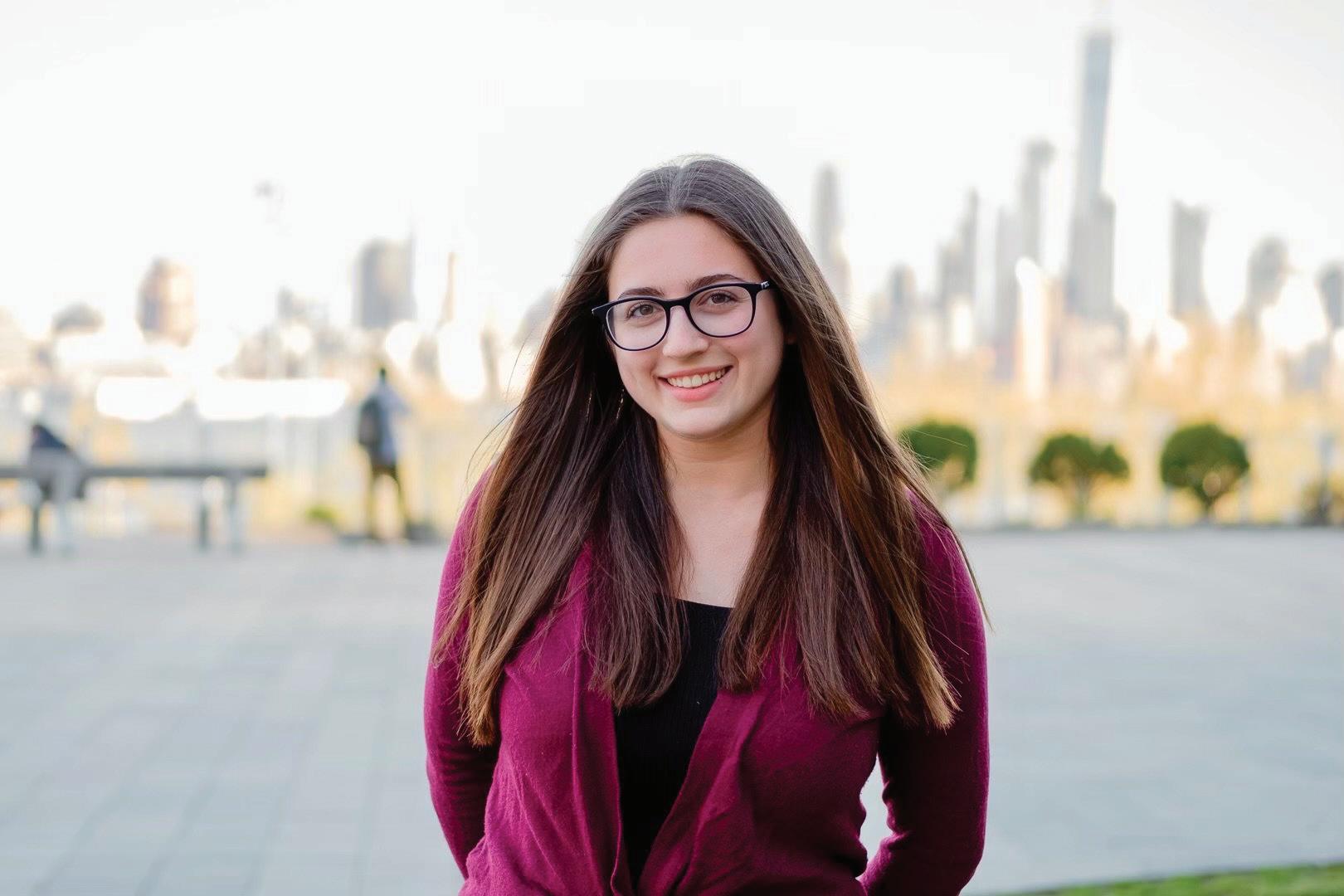
 Isabella Ziv ‘25
Isabella Ziv ‘25
MIND OF A FRESHMAN Putting on a show SENIORITIS Come back next time
roles. I feel like in middle school, I wasn’t ready for the responsibility, but in high school, I felt like every time, the director would choose the same cast (and that same cast coincidentally never included people of color in prominent roles). I was excited to join the Stevens Dramatic Society (SDS) for a new start.
BY NICOLE CHEUNG ‘27
I have a very special connection with this year’s musical, The Addams Family as do many of my other cast members. In my freshman year of high school, I did The Addams Family. However, due to the COVID-19 outbreak, we canceled the show three hours before call time. I was so excited, after painting myself white for a whole week (I was a dead ghost ancestor), to finally put on the show. We thought we would go into quarantine for two weeks, then come back and put on the musical, but as weeks and months passed by, we realized it would never see audiences. A very similar experience happened the same year at Stevens. Their show, The Addams Family, was canceled, so this time, it feels like a redemption round for everyone.
I’ve been doing musicals every year since the first grade. I like to say that I’m just the go-to ensemble member, as I rarely land leading
I’m not sure many people did this, but before I even accepted my offer from Stevens, I had come to see the 2023 musical The Prom. Many tech schools don’t thrive in the arts, and I wanted to see if I fit in here. I was stunned. I can’t even explain how good it was. So when I went to school with the same people in the cast, it was like seeing celebrities. In my high school theatre company, there was this air of superiority with leading roles. Leading roles would hang out more, get more say in things that happened with the show, always run the Instagram, give long speeches to the smaller roles, and give the director’s orders to us (because the director couldn’t be bothered to tell us herself). I didn’t know much else, so I assumed all theatre companies were like that. In my short time taking part in the musical, I have never felt a superiority complex. I find myself naturally talking to everyone, and maybe that is the way it should always have been. A thing that will probably stick with me forever was a time
when I was eating before 10 a.m. Saturday rehearsal, Kyle Castillo (my Gomez!!!) said something along the lines of, “It’s crazy that you’re a freshman because it feels like you fit right in with us. Like you have the same humor.” I don’t think he knew, but that made me want to burst out crying.
Since being accepted into the show, I have felt like such an imposter. We have a very small ensemble of six ancestors, I felt like I just wasn’t as valuable as everyone else. I’ve always struggled with dancing as I have no rhythm whatsoever, my acting is sub par, and my voice is pretty av erage in terms of theatre kids. I was performing in the en semble with people that I’ve looked up to and fought with the idea of “Why did they choose me?” every rehearsal.
But when I think this way, I am personally reminded by my wonderful cast mates that I’m not a complete failure if I miss a step in a dance, sing when I’m not supposed to, or mess up a harmony. I’ve made so many friends and love ev eryone in this show and the show itself so dearly. I can’t wait for people to see every one’s hard work. Even though we’re putting on a show about a fictional family, it feels like I’ve found a real family here. By the time this article is published, you still have two more chances to see the show! Saturday 2 p.m. and 8 p.m.!
See you there!
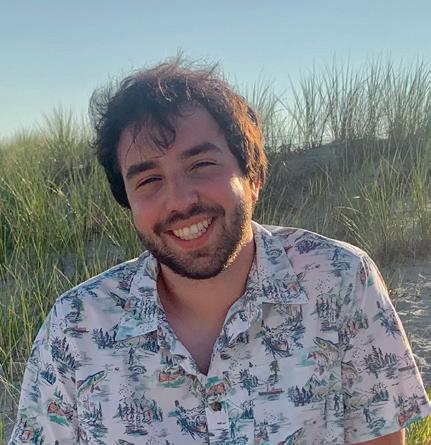 BY ETHAN KLESCHINSKY ‘24
BY ETHAN KLESCHINSKY ‘24
The Senioritis is really kicking in so I don’t feel like writing. Come back next time!


COMIC CORNER
BY LIZ SEPULVEDA

Friday, April 5 7
Editor-in-Chief
PHOTO COURTESY OF STOCK.ADOBE.COM
Opinion
BOOK OF THE WEEK

Brandon Sanderson Advertisement
figure in the fantasy community. His expanded universe, which contains several best-selling book series, Cosmere, has become one of the standout pieces of fantasy fiction in
OFF THE PRESS
recent years. This is mainly for three reasons: Firstly, the sheer size of the Cosmere is mind-boggling. Sanderson writes 1600 words a day, and his many series lend credence to this fully living, breathing universe. Secondly, the magic systems. I don’t know about you, but my favorite part of the fantasy is the world-building and the explanation of how the magic works. Each of Sanderson’s series has a unique magic system, and part of the fun of reading is figuring out how each system works and how they eventually tie into each other. Finally, each series is vastly different in temperament, pacing, idea, and character. One series
is essentially a heist movie where magicians throw coins at each other with a side of adopting a forgotten child. Another is an epic war that starts with a guy wearing all white jumping on walls to kill a king. I could go on about funky magic systems and fascinating beginnings, but I think you get the picture. However, if I was just starting off my romp through the “Cosmere,” I would begin with Warbreaker Warbreaker is a standalone novel that tells the story of two princesses of an independent kingdom. One must marry the king of a larger kingdom to retain their nation’s independence, and the other takes
Standard wordplay
BY OFF CENTER
-SatireThis column, Off The Press, is known for being very wacky and providing all kinds of humorous news pieces. However, for this issue, we decided to go back to a simpler time when jokes required a basic setup and punchline, looking at the way that manipulating words for humorous effect caused us to try to look at the world in a unique way. So, we present wordplay based on the following topics: Fruits and Vegetables, Birds, Insects, Sports, Outer Space, and American State and City Names.
What do you get when you cross a dog with a fruit? You get a mango lassie! How do you make apple pie? You take the apple area of a circle and divide it by the apple radius squared! Once, I wanted to get a job as a fruit, so I sent in my application. Another time, I was going to medical school, and the teacher was a doctor. Like any good student, I put an apple on her desk, but for some reason, it kept her away. How do you make an eggplant? You give it a watering can!
Why do birds fly south for the winter? Because
it is too far to walk. Why do seagulls fly over the sea? Because if they flew over the bay, they would be called bagels. What is green and likes to peck on wood? A wood-pickle! Where do ducks go when their backs are hurting? At the chiro-quack-tor! What kind of bird likes to double as an arcade game? A crane! Why do thieves like banks that use robins as currency? Because thieves always like robin banks!
How is a spider similar to a computer scientist? Both are good at developing webs and catching bugs. How is a spider similar to Elmer Fudd? Both want to have Bugs for dinner. What do you call a very cheap bug? A cent-ipede! What do you call a very small pillar? A caterpillar! Why do bees like to hum? Because they don’t know the lyrics! What kind of bat likes to act like a bug? A cricket bat! What kind of sport do ties like to play? Bow-ling! What do you call a person who speaks many different languages while bowling? Bowl-lingual. What do golfers like to eat for lunch? A club sandwich! What sport do people like to play in the desert? Valley-ball! Why do mathematicians play tennis early
in the morning? Because they always know that tenn-is after nine! Why is Charlie Brown bad at base ball but good at bowling? Because in both sports, he is good at getting strikes! When do philosophers and opportunists rarely fail at baseball? Because they only strike while the iron is hot!
How do planets keep their pants up? With an as teroid belt! Which binary star system usually doesn’t laugh at jokes? The one that is Sirius! What planet likes to act like a dog? Pluto! What kind of rock do vegetarians not like eating? The ones that are a little Meat-eor! What kind of sea do space pirates like to cross? The Galack sea! What food do squirrels eat in space? Astro-nuts!
her father’s place as the next ruler. Complications occur when the younger, untrained princess is sent to her elder sister’s place for marriage. Where she goes is a kingdom of gods and colors. In this world, every single person has a soul called “Chromatic Breath,” but everyone can also impart breath. Vivenna’s, the princess, kingdom bans color and any form of exchange of chromatic breath. In this brave new world, however, color is everywhere, and chromatic breath is exchanged freely and greedily. Finally, she meets the gods of this kingdom, humans that are truly back from the dead –ironic that I’m writing this
on Easter – with countless amounts of chromatic breath and the powers that come with them. However, strife and war are coming to this kingdom and hers, and it will be Vivenna’s role to break it before it happens. That was simply a brief outline of the book and the magic system. To be honest, I didn’t really do it justice. Too much world-building, and the magic system is too complex to encapsulate in a paragraph. However, all this came out of a singular book, and the Cosmere has dozens out now and dozens to come. Warbreaker is simply the easiest book to get into as it’s a one-shot and starts to make Sanderson’s style make sense.
DOUG’S CAR CORNER
What is a project car?

a car enthusiast, they’ve probably complained about their “Project Car” to you and how much work needs to be done for it to finally get back on the road. What in the world is a project car? If they’re so painful, why do people keep them and deal with the headaches they bring?
What do people in Florida do when they get mad? They throw Tampa tantrums! I once asked a friend what the capital of Alaska was. He replied, “Juneau?” And I said back to him, “I don’t know, that’s why I’m asking you!” I was talking to a friend about where different animals live, and I told him, you find buffalo in the Great Plains, but my friend said, “No, you find Buffalo in New York”!
EXPLORING: A STUDENT’S GUIDE TO NEW YORK CITY
Project cars are exactly what they sound like — cars that are long-term projects for the owner. Something they can build in their free time while their safe and reliable daily driver gets them to and from work every day. The scope of a project car can range from a full restoration of their dear old dad’s ‘74 Corvette to making an old piece of crap Honda road-worthy again to building a race/drift/rally car, and literally anything between and beyond these. A project car is a great way
to get comfortable working with your hands and learn about how vehicles function. Often, project cars require hours and hours of labor on top of hundreds, if not thousands, of dollars to be poured into them. Typically, project cars are NOT investments. Most enthusiasts understand that the more work and modifications they put into their cars, the lower the resale value will likely be. There is the occasional restoration project that can net the owner some profit, but those are usually left to professionals or YouTubers. Working on a project car should be a labor of love, driven by the desire to complete the project (they’re never really done, though, let’s be honest), and see their hard work pay off by driving that car. Even the most modest of project cars can bring so much joy to their owners.
Project cars can have immense sentimental value, with some being passed down through the generations of a family. It’s not uncommon for someone to STILL be working on their grandpa’s car and keeping it on the road simply because it was their grandpa’s, then their dad’s, then finally theirs. This kind of sentimental value can’t be matched by money most of

So I hope that you check this or one of Sanderson’s other series because there’s a lot more to discover, and the only way to find out is to RAFO.
the time, making the money pit of a car worth every penny.
Other projects can simply be pursued because the owner likes the car, platform, or brand so much. For example, my 1993 Honda Del Sol is worth probably close to zero dollars. However, the Del Sol was the first car I ever saw online, and I went, “Wow. I really want one of those.” It’s not a fast car; it was never incredibly valuable or sought after, and my specific example isn’t in great condition. But since I bought my Sol, I’ve had the chance to slowly fix all of the little issues that it has. It’s been such an incredibly rewarding experience, and I wouldn’t trade it for the thousands of dollars I’ve spent on it (I know, I know, but it’s okay; I love the little guy — I named it Solly!).
Anyway, that’s my take on project cars. They don’t make sense, and they cost more than they’ll ever be worth, but the satisfaction that comes with them is unmatched. Like most things that I talk about in this column, the monetary value is heavily outweighed by the experience of building, driving, learning about, and sometimes even rebuilding cars. Don’t be afraid to take on one of your own! You won’t regret it.
Hudson River Waterway Walkway: views and outdoor adventure
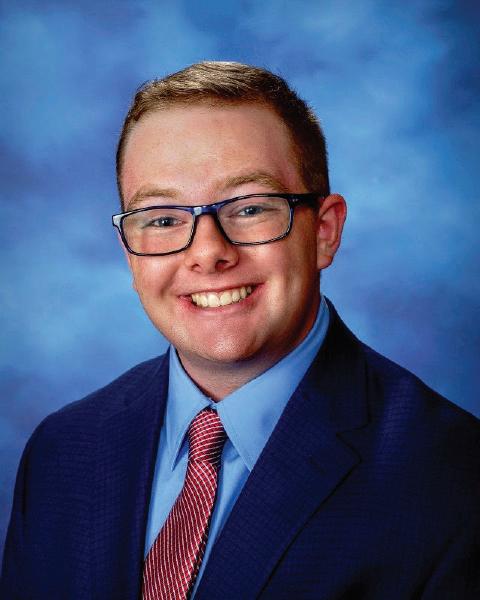 BY EVAN PAPAGEORGE ‘26
BY EVAN PAPAGEORGE ‘26
As the weather gets niAs the weather gets nice in the New York City area, there will be more opportunities to explore the many outdoor sites in this incredible part of the world. However, the best part of being in Hoboken, is the ease in which Stevens students can explore the region and get outside with the Hudson River Waterfront Walkway (HRWW).
The HRWW is a gem of Hudson County due to its
unparalleled views of New York City and unique culture. It is nearly 20 miles of pedestrian and bike paths that run along the banks of the Hudson River. The walk begins south of Hoboken next to the Bayonne Bridge in Bayonne, NJ, before weaving in and out of the port, passing by the Statue of Liberty and Liberty State Park. The walkway enters Jersey City into Newport before crossing into Hoboken, where it proceeds alongside Stevens along Piers A, B, and C and by the Griffith building. The path continues through Weehawken, West New York, and finally ends next to the George Washington Bridge by Fort Lee (where you can easily walk across the bridge and follow the Hudson River Greenway back down to the tip of Manhattan).
Along HRWW are many attractions, historical sites,
and recreational areas. In Hoboken alone, there is the Point of Embarkment for soldiers in World War I, endless restaurants and eateries, numerous CitiBike locations, and Castle Point Skate Park, all with breathtaking views of the Manhattan skyline. Addi tionally, there are a mul titude of public transit op tions along the route. The PATH stations in Hoboken, Newport, and Jersey City are less than a five-min ute walk from the HRWW, with similar access to NJ Transit and the Hud son-Bergen County Light Rail.
One of my favorite parts of the HRWW (and many students) is that the entire experience is 100% free. People who work in Jersey City go to eat lunch, and runners, bikers, and walk ers traverse the walkway for exercise. In the warmer months, boardwalks that
are part of the HRWW see swarms of people going to New York, waiting to get into a restaurant, or simply sitting and enjoying the sunset. The HRWW offers a remarkable opportunity
culture of the New York City area. Its stunning views, historical sites, and easy access to public transit provide an enriching experience for students and visitors alike. The fact that it is cost free makes it
enjoyable for people from all walks of life. Whether for exercise, leisure, or simply sight-seeing, the HRWW is a valuable asset to the community and a must-visit destination for anyone in the area.

8 Friday, April 5
PHOTO COURTESY OF AMAZON EVAN PAPAGEORGE FOR THE STUTE
Opinion
FROM SOUQS TO SCHOOLS
The perks of being bilingual

Most heritage languages are lost after the third generation. It becomes increasingly difficult for younger family members to keep up with their mother tongue, especially if elders are absent. But preserving a language is not just about holding onto words and phrases; it’s about building identity and learning your history. There are plenty of practical benefits, like enhancing your resume, comfortably conversing with elders, and confidently navigating a county solo. However, many hidden, unexpected advantages come with keeping your mother tongue. So, I will be explaining the less-discussed perks of being bilingual.
First, you get double the memes. Need I say
more? Although memes have become a global language of their own, almost every country has its own memes that outsiders don’t understand. There are millions, if not billions, of memes that we will never come to know because of language barriers, and it’s heartbreaking. You can start preventing this by completing your daily Duolingo lesson (this is not sponsored by Duolingo).
You also get double the music. Not only that, but you can find really amazing songs that sample your native language. Fun fact: “Big Pimpin’” by Jay-Z sampled “Khosara,” an Egyptian beat. He got sued for that; that’s how you know it’s great (my mother shed a tear when I played it for her, not because it was good, but because she was offended).
Some people also just find it hot. Even if you consider the language to be “ugly” (I’m referring to the Iraqi dialect), somewhere out there, someone finds it incredibly attractive. Bonus points if you look nothing like your stereotypical ethnic background. I’ve seen Ed
Sheeran’s doppelganger spew out better Arabic than me. And it leaves you so impressed, but also uneasy because it’s like — that’s not supposed to be coming out of you.
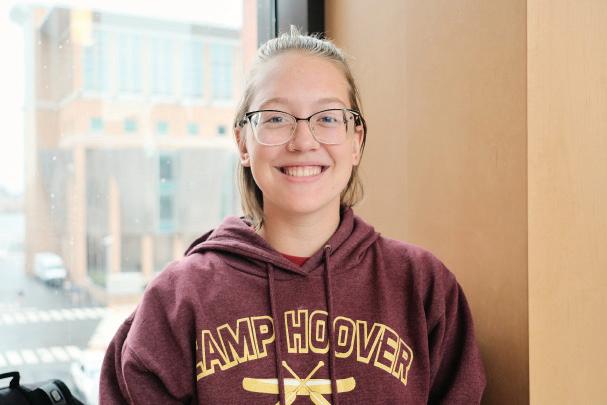
And probably the most fun of all, eavesdropping on other people. I can’t tell you how much fun I’ve had listening to peo ple say horrible things about others and then chuckle a bit. The way their eyes light up (both in fear and happiness) is an experience everyone should have. Bonus points if they are talking badly about you, and then you can clap back so hard it makes them want to befriend you.
It certainly isn’t an easy task, and you might run the risk of putting your kid in English Second Language (ESL) courses. However, as a child who did have to take those classes, I can reassure you that it was quite a time. They took every foreign kid, stuck us into a classroom, and made us figure it out (no one understood each other, but we had the most fun). So, this is a sign to keep your mother tongue alive.
ADVICE FOR BROKE COLLEGE STUDENTS
“Hustle Mindset”: Financial advice or a social media trend?
 BY HIMA THUMMALA ‘26
BY HIMA THUMMALA ‘26
In recent years, there haIn recent years, there has been a rise in the adaptation of having what is called a “hustle mentality.” This sort of mindset entails being constantly productive alongside making a large quantity of money as income. Some people on social media say to have a 9 a.m.5 p.m., as well as a 5 p.m. - 8 p.m. after as a part-time job. Others say to start your own company and work for yourself by being your own boss. But what is the best way to really adapt to this “hustle mentality,” and should you even bother doing so?
If you want to have another job, it is important to play into your strengths and weaknesses. If you’re a talented artist and paint as a hobby, try to sell your artwork. If you enjoy learning and teaching, become a tutor, and so on. However, it is recommended to not do something that tires you out. With either school work or a career, you want to do a part-time job that would give you energy, not drain it. But is it even worth it to have another job?
If the reason for another job is because of a need for money, it is very much valid to have one. But if it is just to adapt to this new culture of always working to ensure future financial success, there are other ways to go about it. Instead of spending all your time and energy on another career, channel your energy into your school work or your current job, as the outcomes are never known. Although, it is important to remember that you should not be doing all of this because of the stress of what you see on social media.
The newest trend of overworking yourself being the same as being productive is not true. As it is often said, social media is a facade and not always truthful because you only see a small percentage of people’s lives. So, how do you find a healthy balance in your life?
Well, it all depends on your balance of wants and needs. Prioritizing your main income source, whether that is studying to get a job or working, will help you form a conclusion on what is and what is not healthy for you specifically. Then, you can see if you have enough time to add on another job or maybe you need more time to pursue your passions or talents. Or maybe just time to relax. It all depends on you as an individual.
Stressing yourself out over what people are doing online does more harm
than good. Although it can be good to attain the occasional study or career-related advice online, it only shows one day of a person’s life. Sometimes, this is not even true, as it could be pre-planned and edited to portray an untruthful reality. Financial literacy is a concept that does not have just one definition; it applies to everything. Instead, different opinions, views, and findings are based on the research conducted. Although there are everyday life financial skills like writing checks or saving money, some stuff is very fill-in-theblank, meaning that it is up to your interpretation and up to you to make the correct decision.
BY CLAIRE HANNAN ‘24
This week, I want to ask the question: are all men evil? Ok, ok, I’m definitely over exaggerating to get your attention; I don’t think anyone would argue that all men are evil. Still, it’s pretty common to hear people saying things along the lines of “all men are bad.” I think it’s important to look at why people say this, and why women might sometimes feel like it’s hard to trust men even if they haven’t met them yet.
It’s very common for people to make assumptions about things they don’t know, but in this case, I feel like this assumption is different from a regular stereotype. I don’t think the phrase “all men are evil” is meant to be taken literally — it’s more of a summation of built-up frustrations. Honestly, it feels like ev-
erywhere you look, people are doing terrible things to each other, society, and the planet. Since the majority of people in power are men, it’s pretty easy to find examples of evil men if you look. Pair that with statistics around men committing crimes and domestic violence and every terrible interaction every woman has had with random men — it’s not hard to feel pessimistic about the entire gender. People get stuck in loops like these all the time with different things. The more negative information we see that confirms the belief, the more we get stuck in it. I don’t think that it’s worthwhile to argue that men aren’t evil because of all the good men that exist. People have made this argument before on this topic and every person logically knows most men are fine. I think it’s more important to think about where the desire to label all men as bad in spite of logic comes from.
I think we all know that our generation likes to be a little reactive when it comes to issues. We boiled down the entire baby boomer generation to “boomers” and have a load of assumptions stemming from real
STEVENS’ CHEFS RECIPE CARDS
issues. It’s normal to face a minor inconvenience and say, “everything is terrible.” That’s because it’s nice when things are absolute. We logically know that issues are more complicated, but when things are black and white, you don’t have to think or worry as much. It takes up less mental space to say that all men shouldn’t be trusted when, in reality, anyone could do horrible things. People are terrible all the time, and, especially when it comes to politicians and people in power, it’s impossible to tell until it’s too late. We all wish there was a way to know if a person will be good to you or not. It would be incredible to never get hurt, lied to, or to hear reports of people you looked up to being bad, but in truth, part of being a person in the world with relationships is always being open to getting burned by those you trust. I think that part of maturing is being able to step away from assigning blame when these things happen. People don’t act terribly because of their gender or any other surface-level factor. Sometimes, these things happen; you just have to brush yourself off and keep trusting.
Vallabh’s chole masala
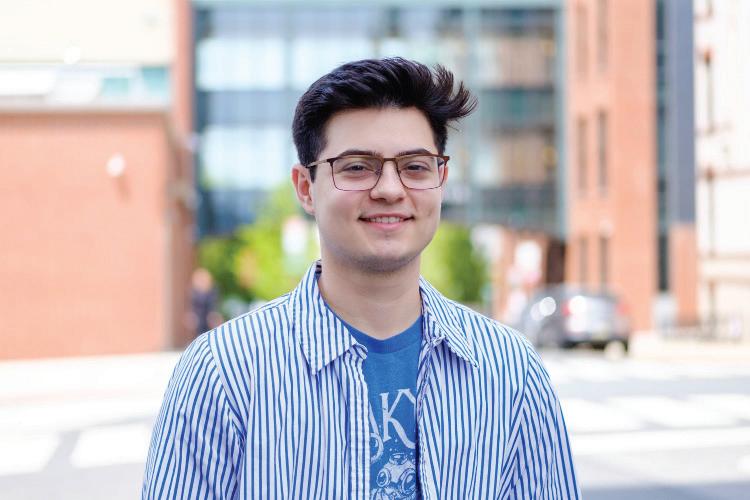
Vallabh’s recipe, and he calls it chole, so it was cut and dry to me. They talked about the differences in species of chickpea; chana masala uses smaller, lighter-colored chickpeas compared to chole masala. They looked at the pictures and considered the goldenness of the final product and their experiences of their mother’s cooking. The results were inconclusive, so I turned to ChatGPT for answers.
This is all not to say that everything about the “hustle mentality” is incorrect as some of the productivity methods can be useful. Some of these are time blocking, reaching maximum productivity within a certain amount of time, and more. Additionally, they can help you have a healthier lifestyle, such as time blocking, allowing you to block off time to rest and relax.
Overall, the “hustle mentality” should be from a relaxing perspective, not a stressful one. If the advice correlates to you, or can be adjusted in a positive and healthy manner for yourself, it can definitely be considered! Just make sure that you are being your best academic and career-oriented self without overworking.

The first recipe Stevens Chefs cooked together was Professor Vallabh’s chole masala, a chickpea curry recipe. This recipe relies on pantry ingredients that last a while in a cupboard or freezer, so this is a good recipe to keep the ingredients to and make when you’re in need of cooking to destress. Chopping the onion is meticulous, and much of the stove time involves waiting for the tomatoes to reduce. You may not be able to find the spices for this recipe at your typical grocery store unless they have an international section. At The Stute general body meeting, I mentioned the recipe I was planning on printing and asked The Stute ’s unofficial board of Indian culture experts to weigh in on the difference between chole and chana masala. This is Professor
ChatGPT says that chole masala has a richer, sweeter flavor due to tomatoes
and spices like cinnamon and cloves, as well as a thicker sauce consistency. Chana masala may be tangier with the use of dried mango powder or pomegranate powder. Regional differences may affect the spice blend, and the version you prepare likely will overlap with either flavor profile based on the ingredients available to you. It was an interesting cultural discussion I wasn’t exposed to before; reader, if you have any opinions you’d like to contribute, I’d be happy to listen.

Friday, April 5 9
ABRAHAM ‘26
(ISH) TALK Are all men bad? 1 can chickpeas drained ¾ cup chopped onions 4 tomatoes chopped or pureed 2 tbsp chopped cilantro 1-2 tsp ginger Seasonings to taste: salt garlic turmeric chili powder cumin coriander garam masala Saute and season onions 1 Saute onions at medium-high in your preferred oil Once translucent add turmeric ginger and garlic a Reduce tomatoes 2 Add tomatoes lower the temp and reduce the mixture for 10-12 min Stir occasionally to avoid sticking and allow tomatoes to darken Add remaining spices, salt, and water as needed a Add chickpeas and simmer 3 Drain and wash chickpeas, add to oniontomato mixture, and simmer until chickpeas soften a Garnish and serve 4 Top with cilantro and swirl of dahi Serve with rice bread naan or eat as it a C H O L E M A S A L A Ingredients: Directions: Equipment 1 large pot Recipe by: Prof Chaitanya Krishna Vallabh
GIRL
PHOTO COURTESY OF ISTOCK
KAYDEN CANNILLA FOR THE STUTE
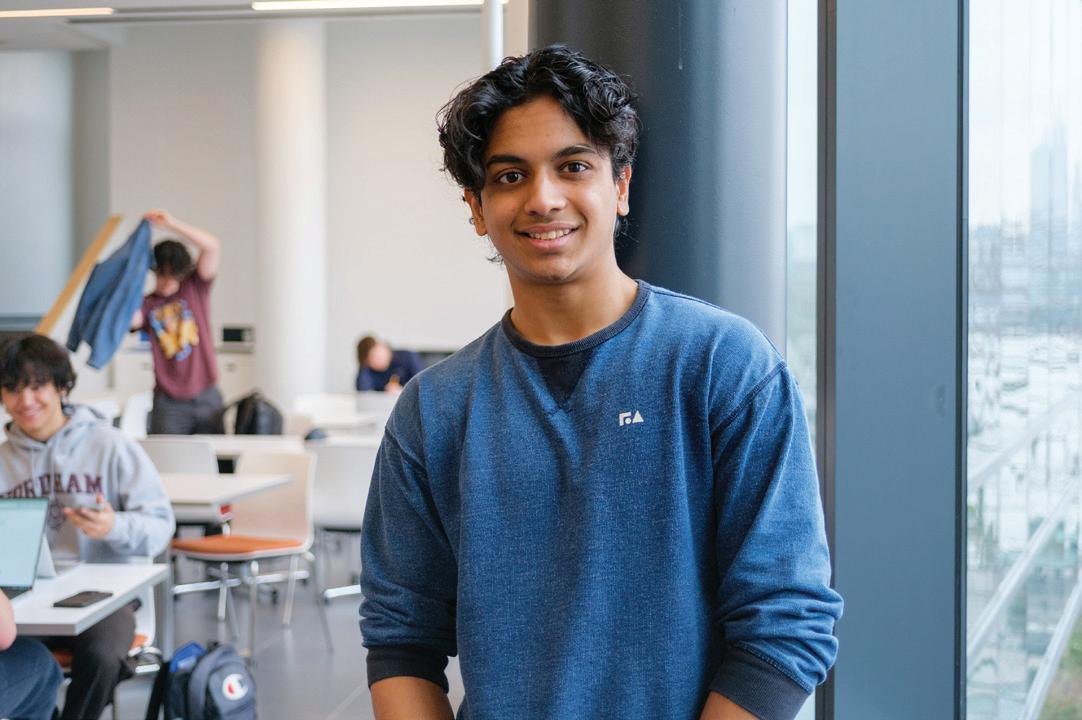



 By
By
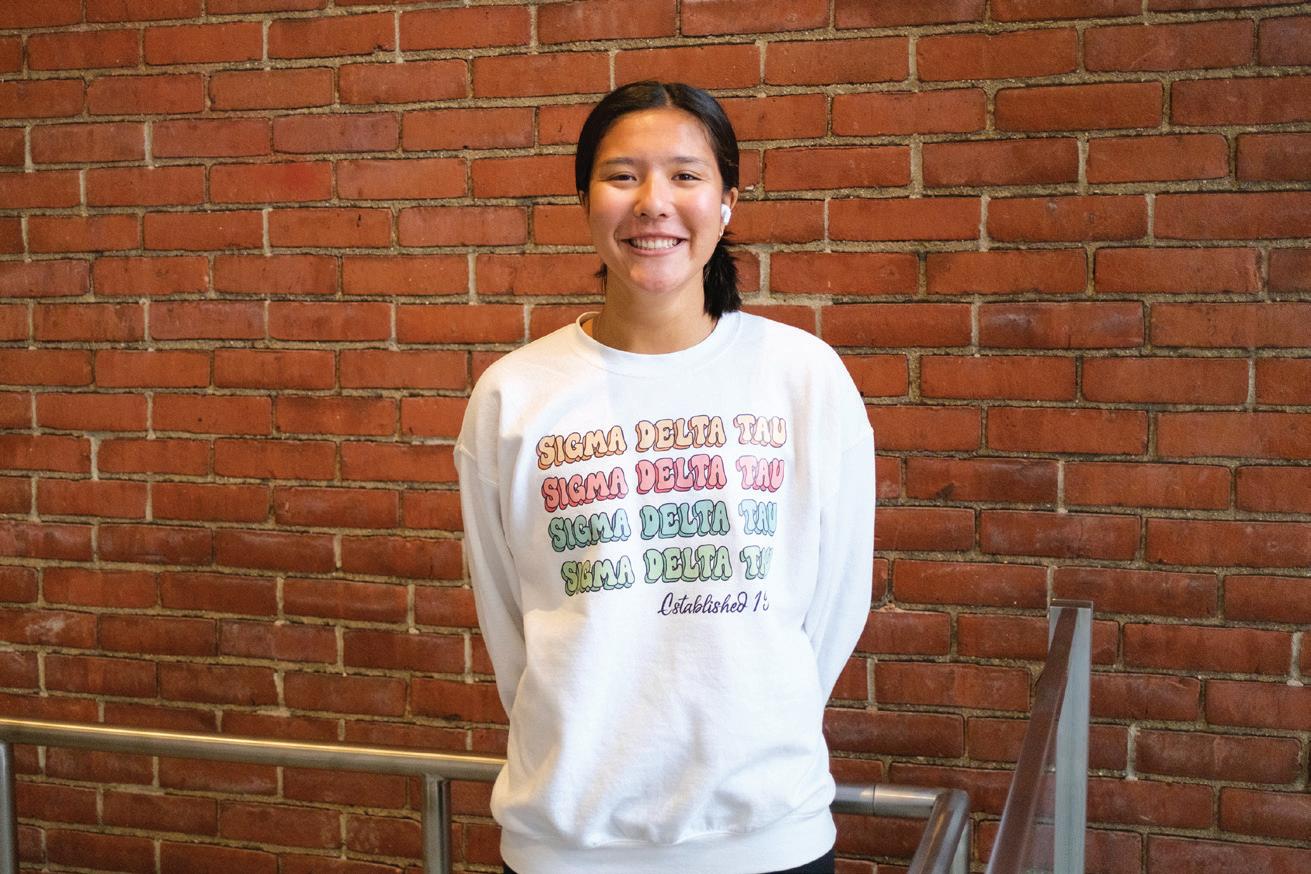
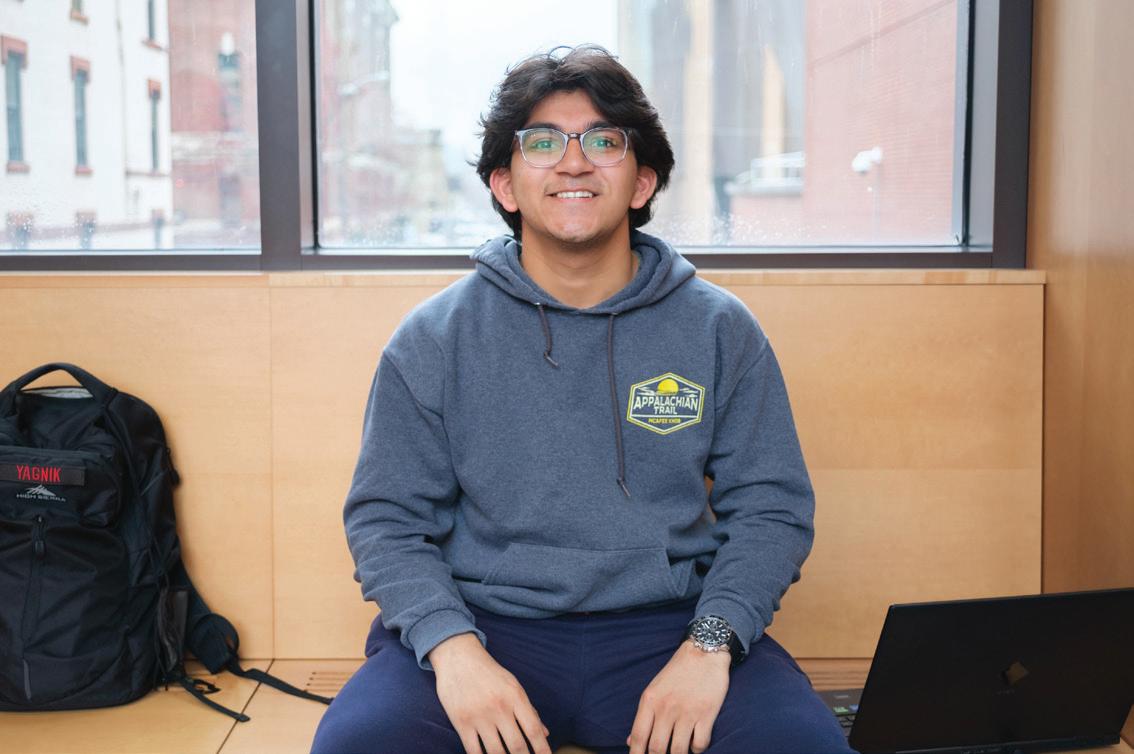
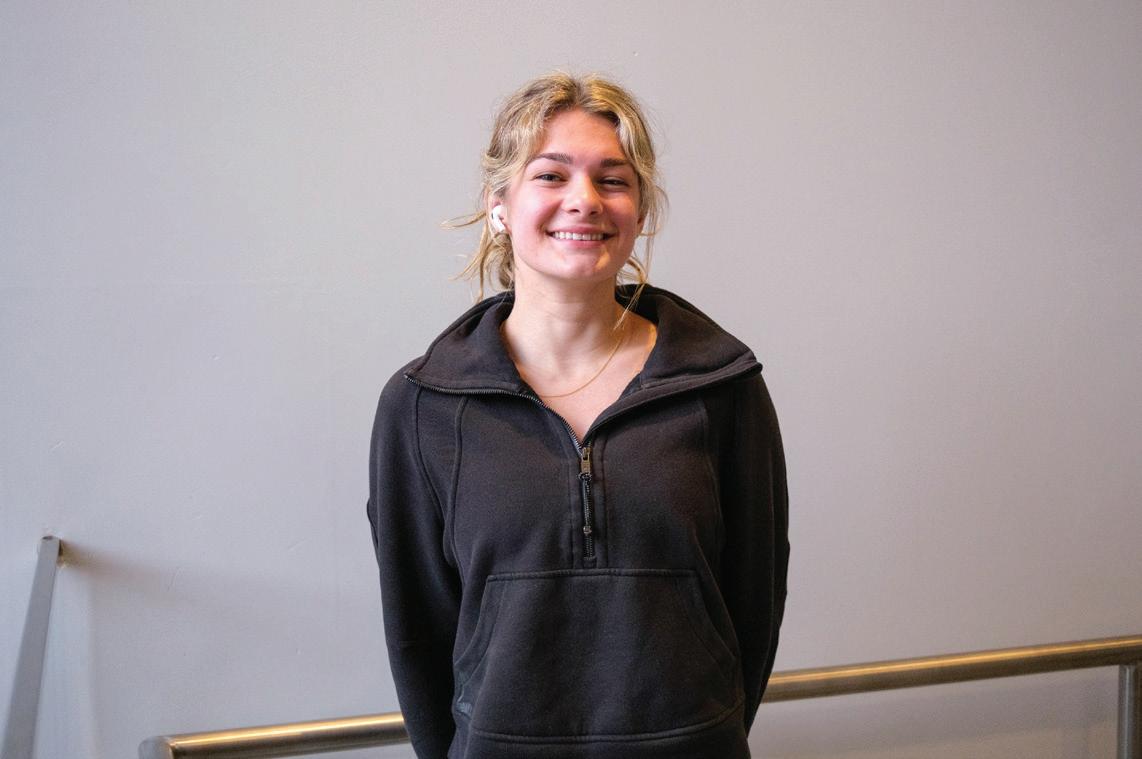
Crossword by Jack Scherban Hidden Links Only Connect


Sudoku


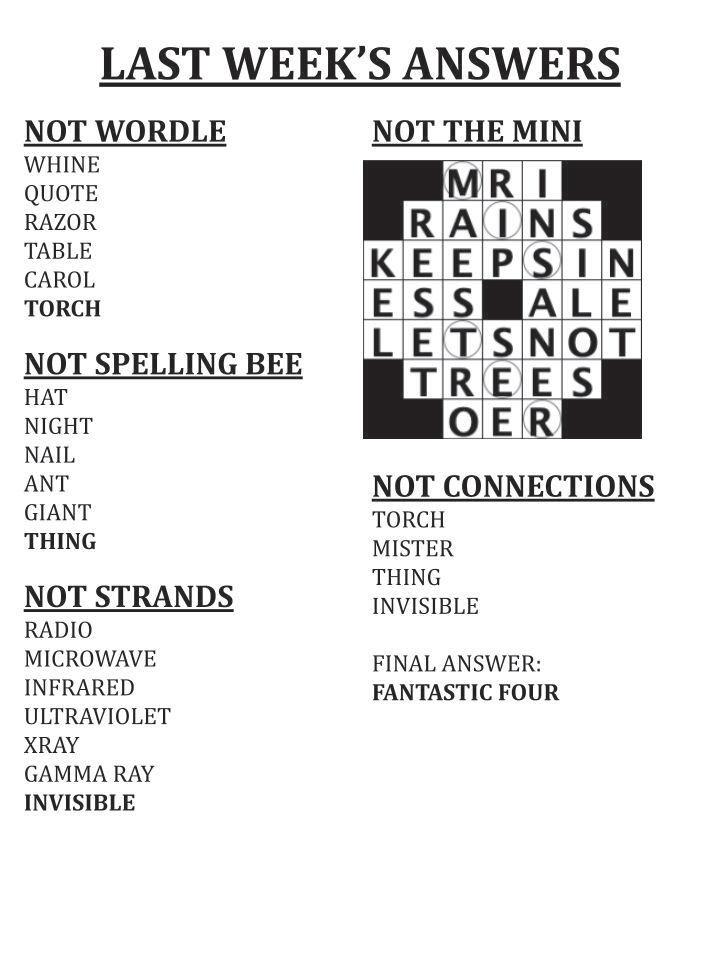
10 Friday, April 5
Pulse
Campus
Samuel Berman ‘24 “Ultrasonic phased array levitators.”
Adi Kumaran ‘27 “I just learned what Roman Empire meant like two weeks ago.”
Aditi Patel ‘27 “I have like 500 Roman Empires. Honestly, it’s so bad.”
Arjun Dubewar ‘26 “My Roman Empire is getting this bread.”
Kai Wong ‘25 Gabby Sokolik.”
Gabby Sokolik ‘26 “Oh my god! The Malaysian Flight 370”
Difficulty:
ROVING REPORTER
Yash Yagnik ‘26 “Summer break.”
Hard
“What is your Roman Empire?”
Rafael Lee Li and Mia Petrolino
ACROSS DOWN
etc. What do the following have in common?
“nouns”. “places”,
CLUES Chain Reaction CLUES • • It’s located next to the • • The Force Awakens
Anagram Magic Square
Hadia Hussain ‘25 “Right now my Roman Empire is applying to dental school.”



 BY SEAN ANDERSON, STAFF WRITER
BY SEAN ANDERSON, STAFF WRITER

























 Isabella Ziv ‘25
Isabella Ziv ‘25
 BY ETHAN KLESCHINSKY ‘24
BY ETHAN KLESCHINSKY ‘24






 BY EVAN PAPAGEORGE ‘26
BY EVAN PAPAGEORGE ‘26



 BY HIMA THUMMALA ‘26
BY HIMA THUMMALA ‘26







 By
By







